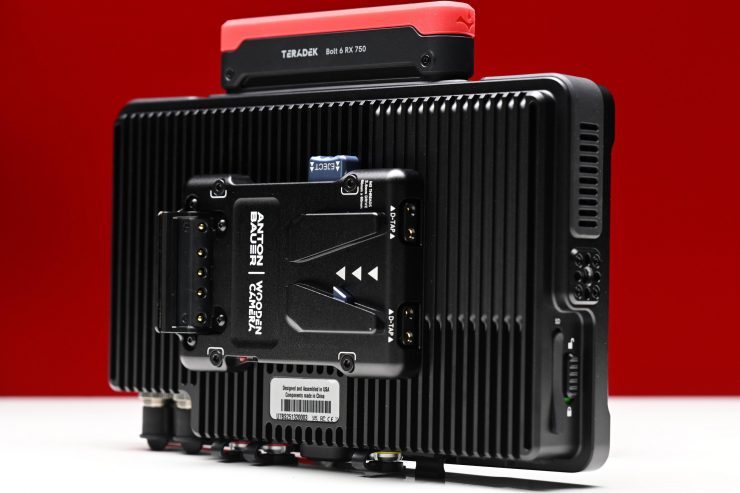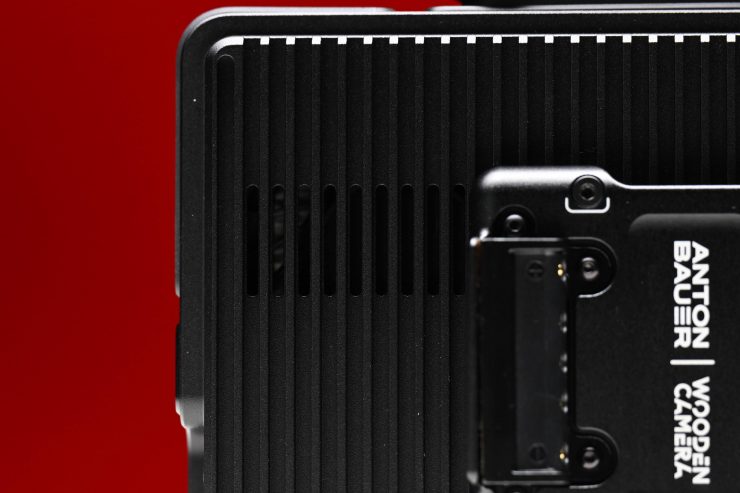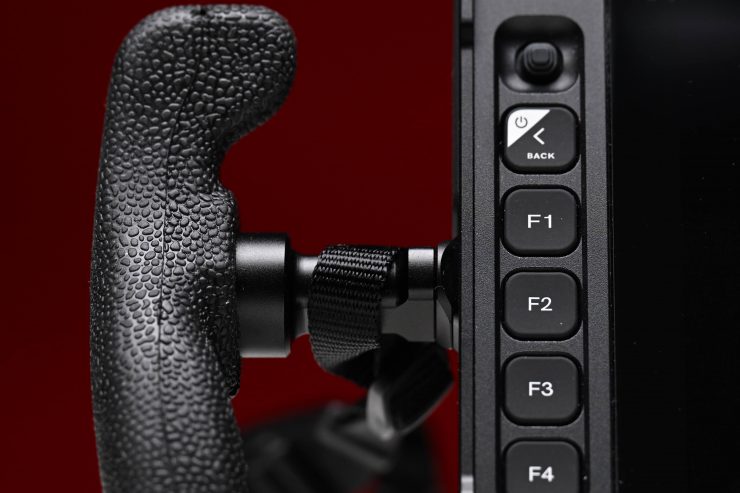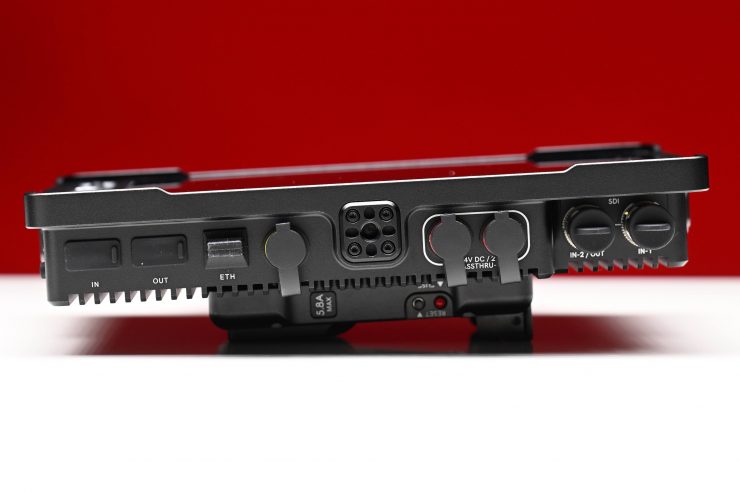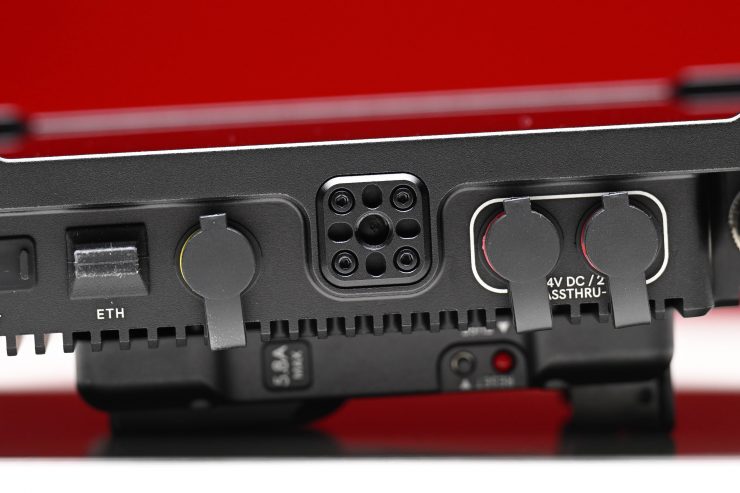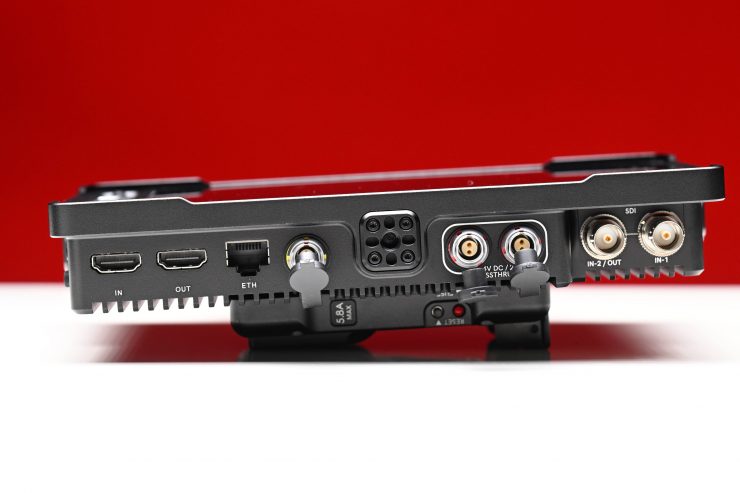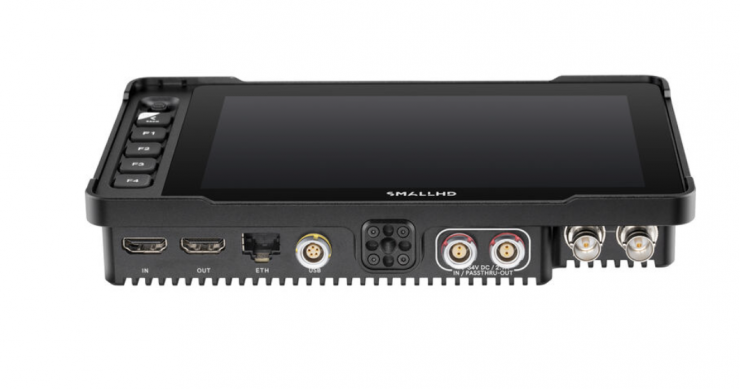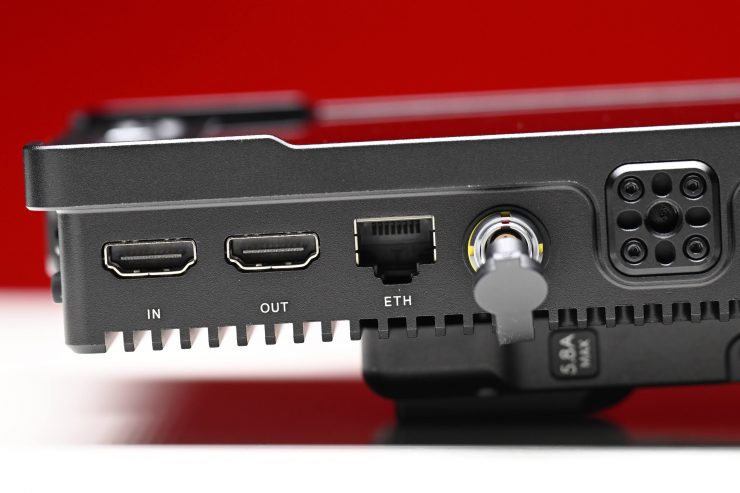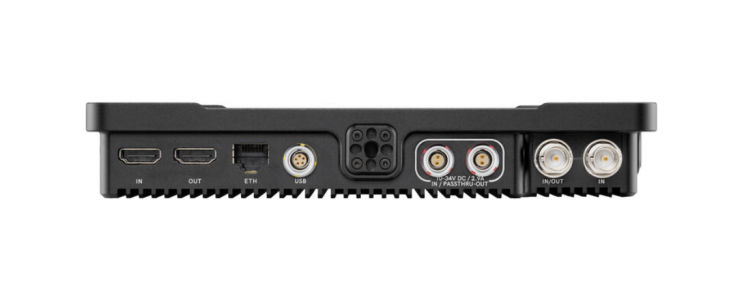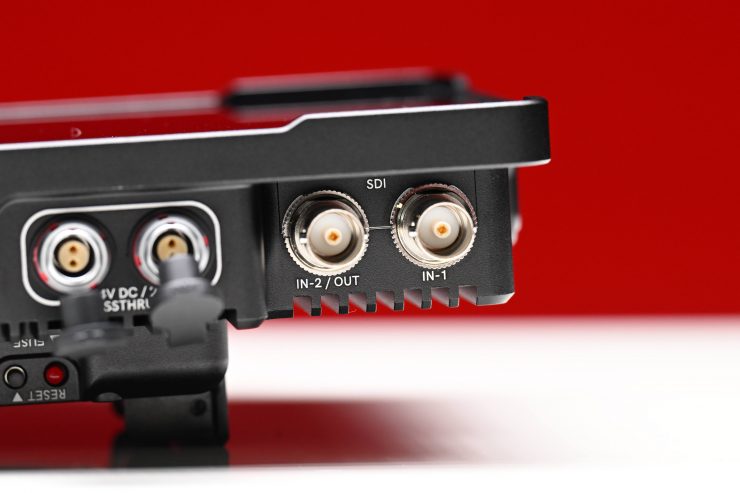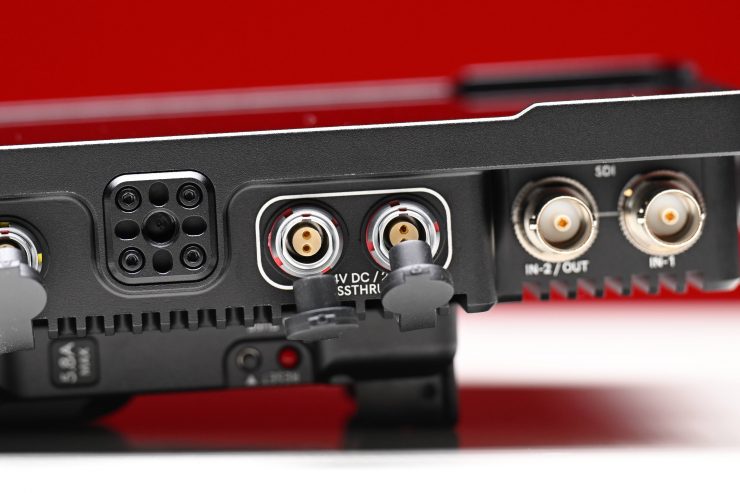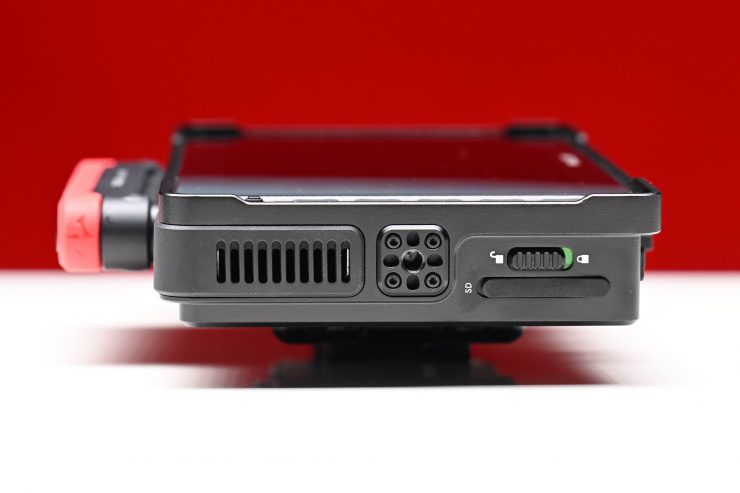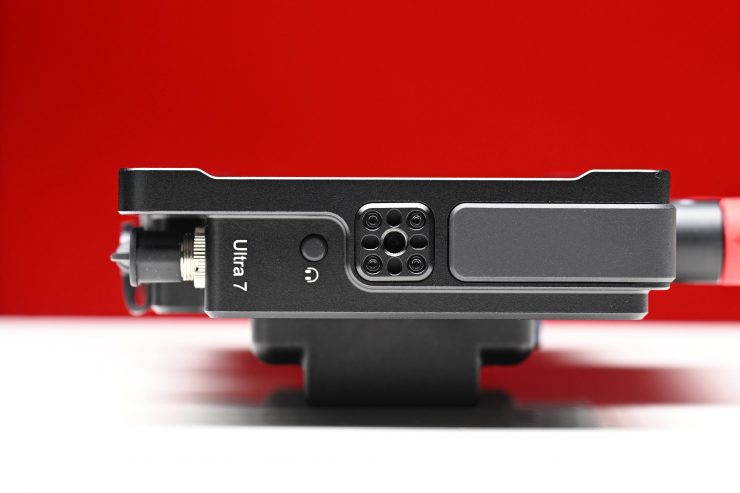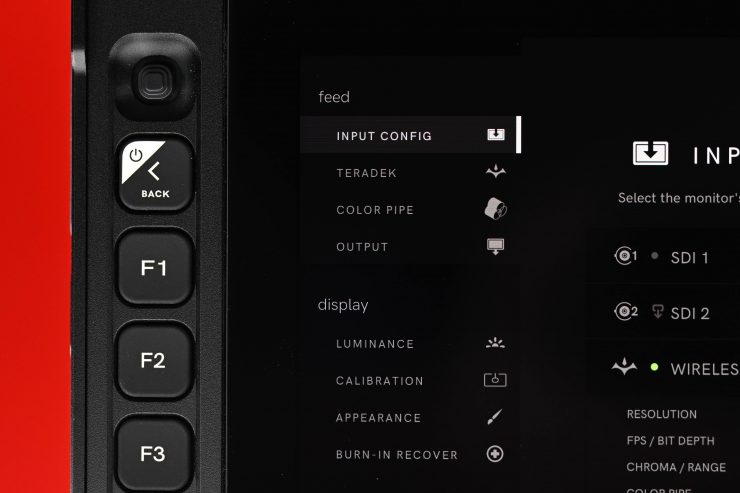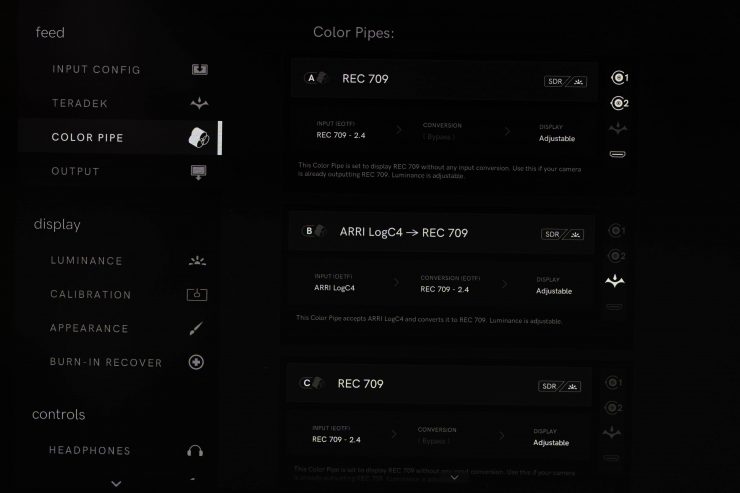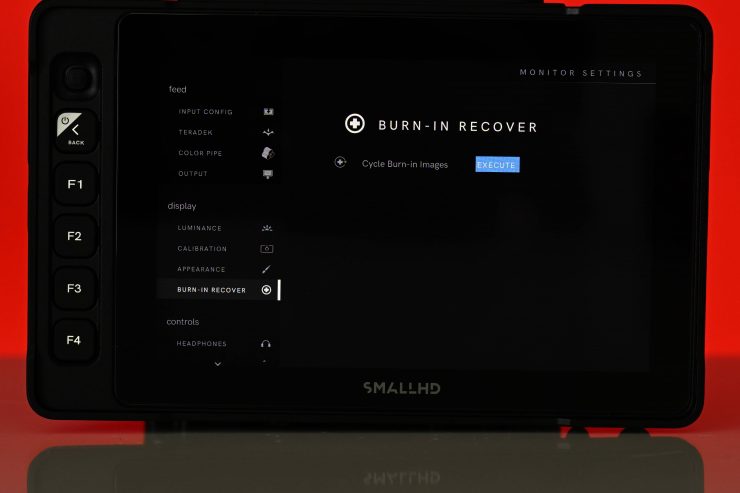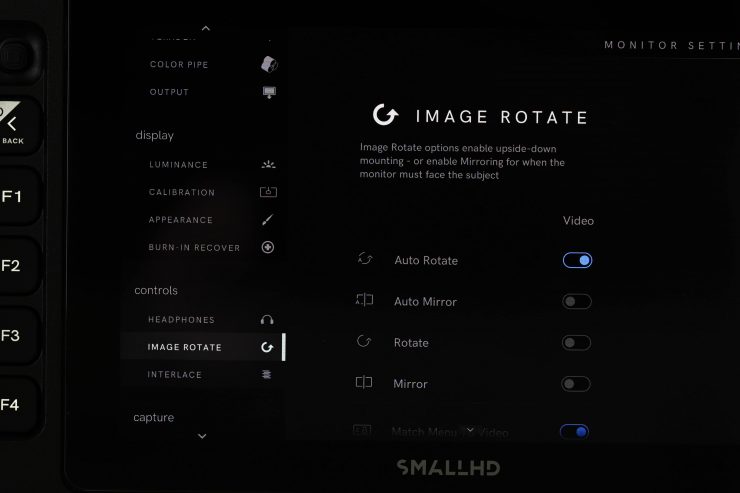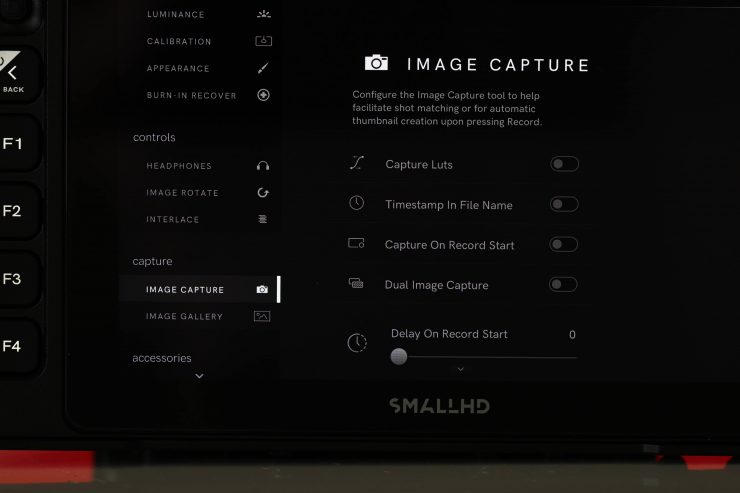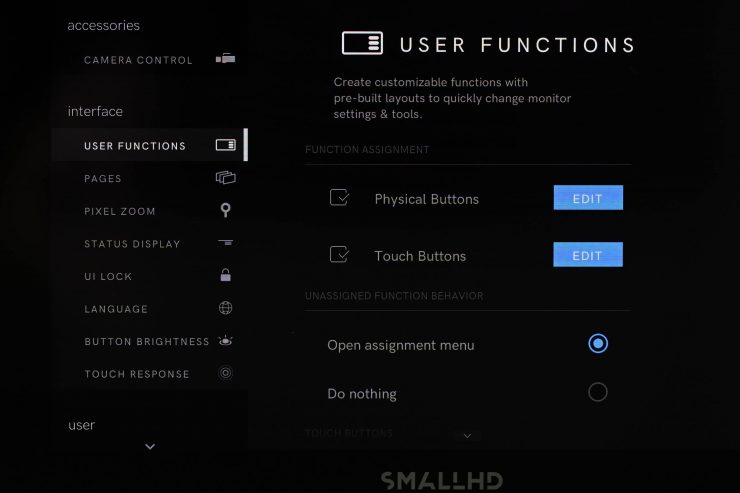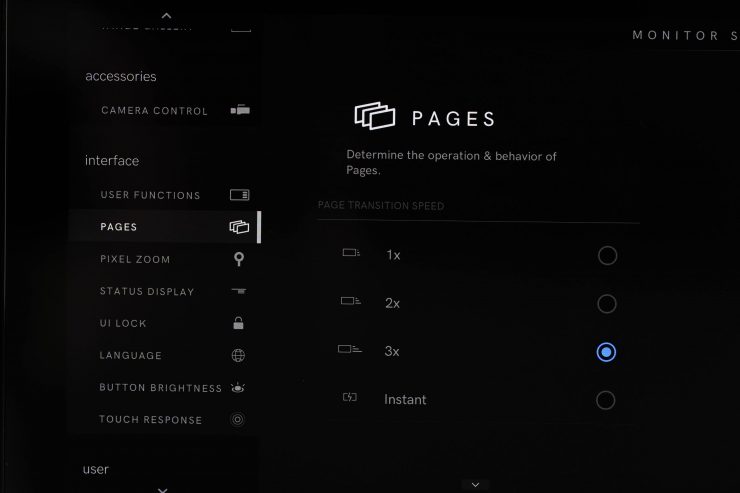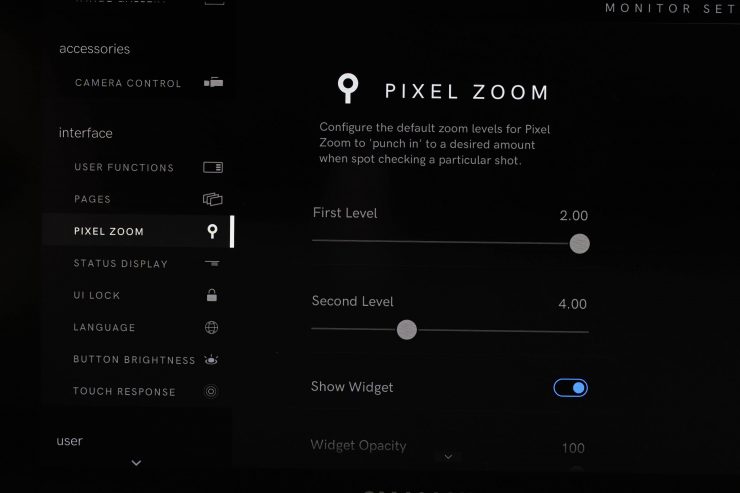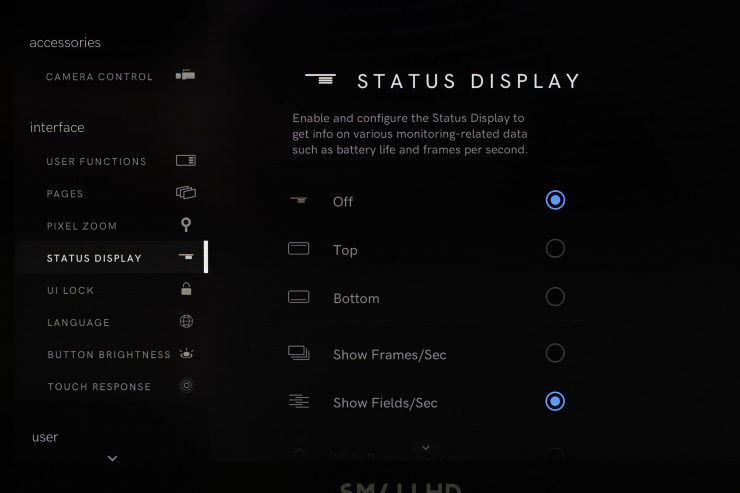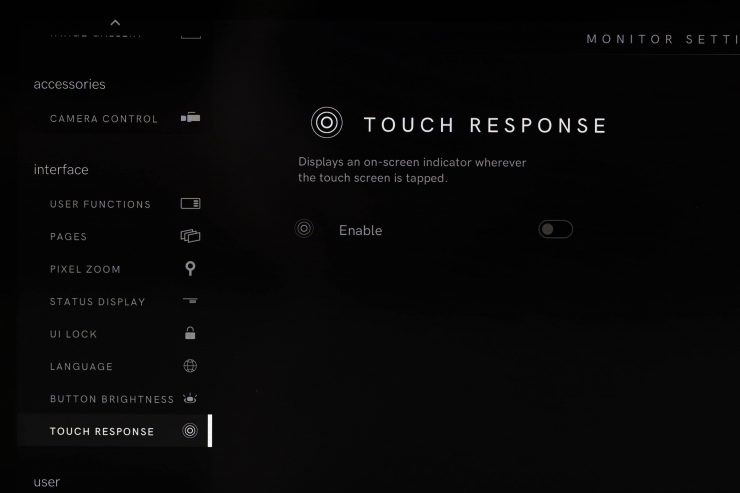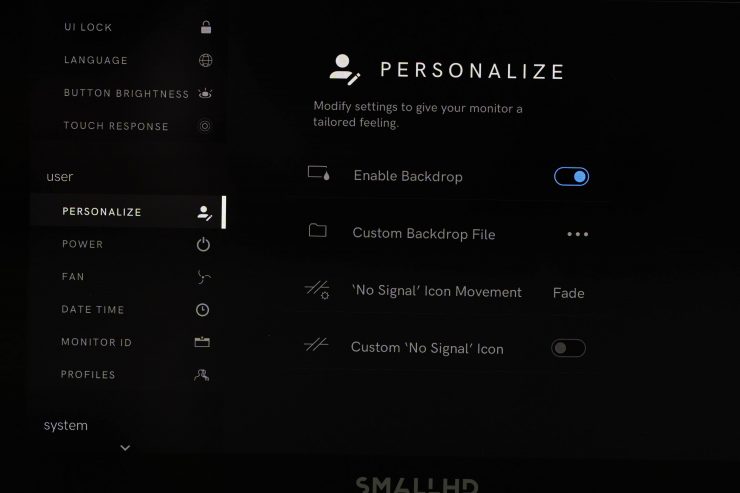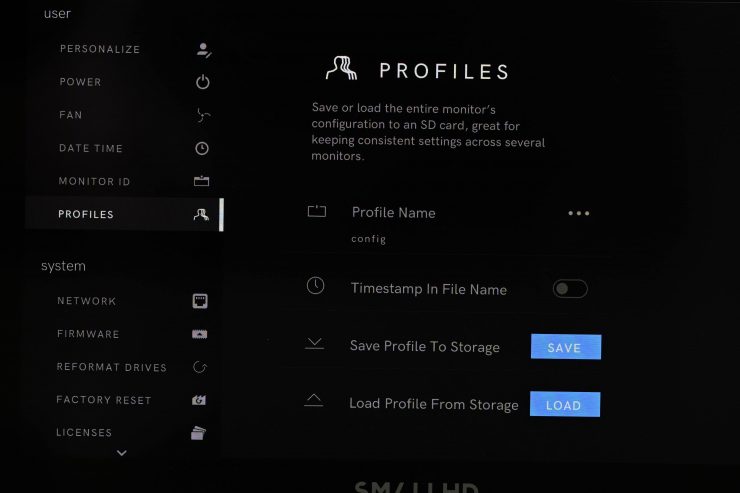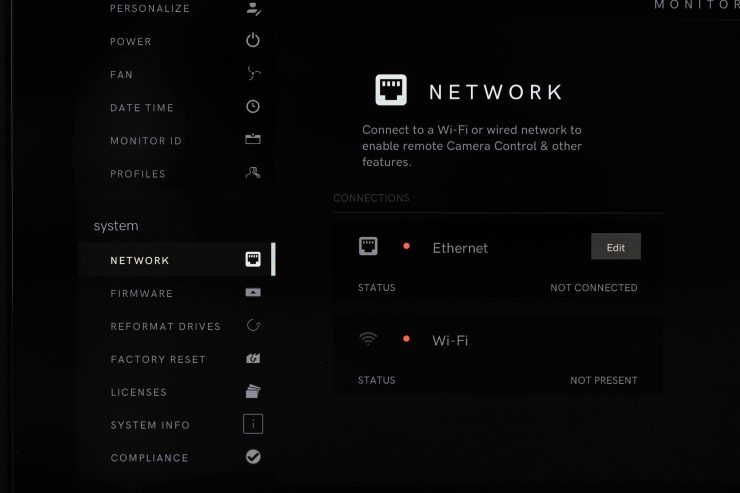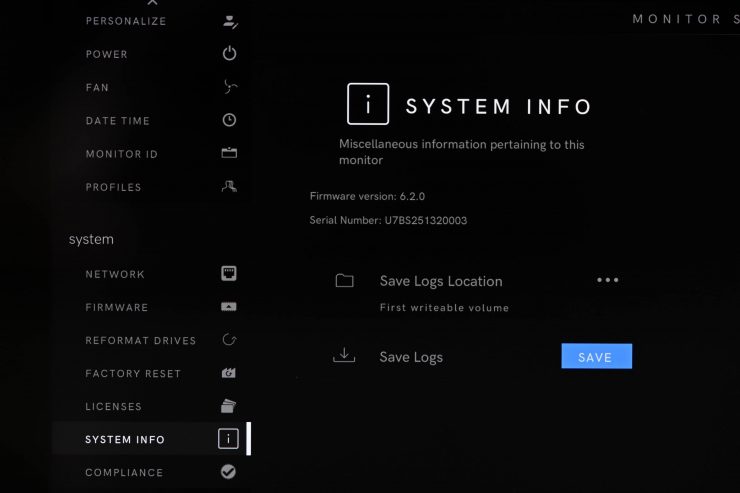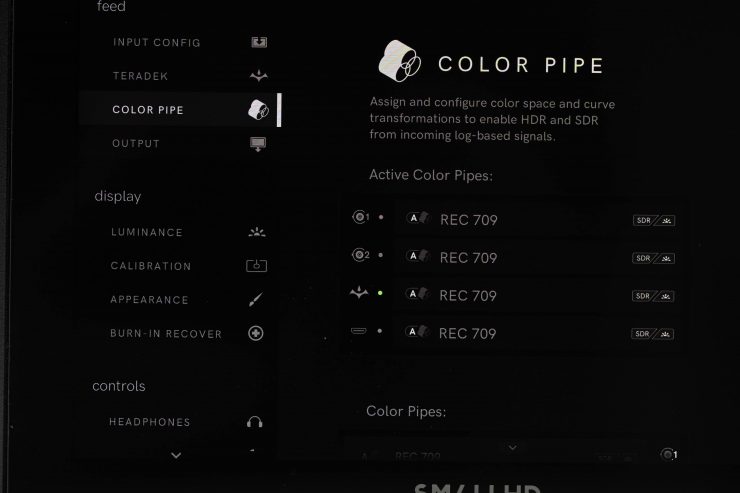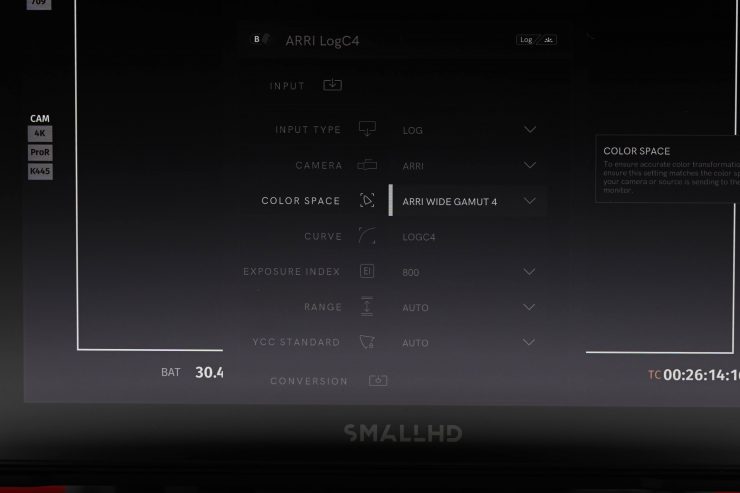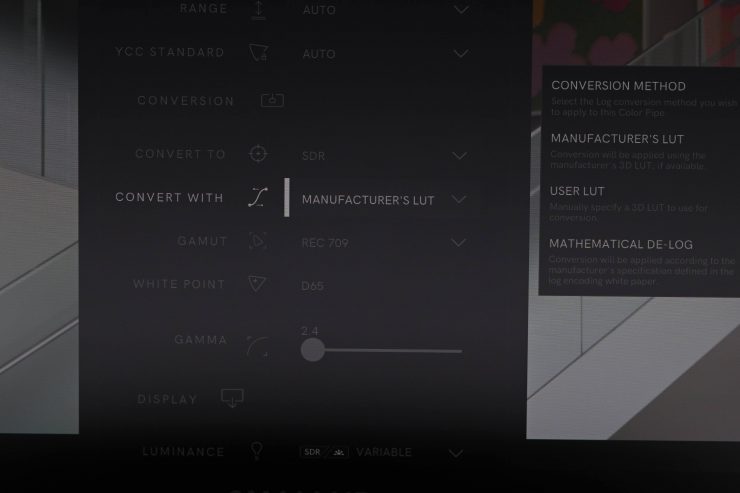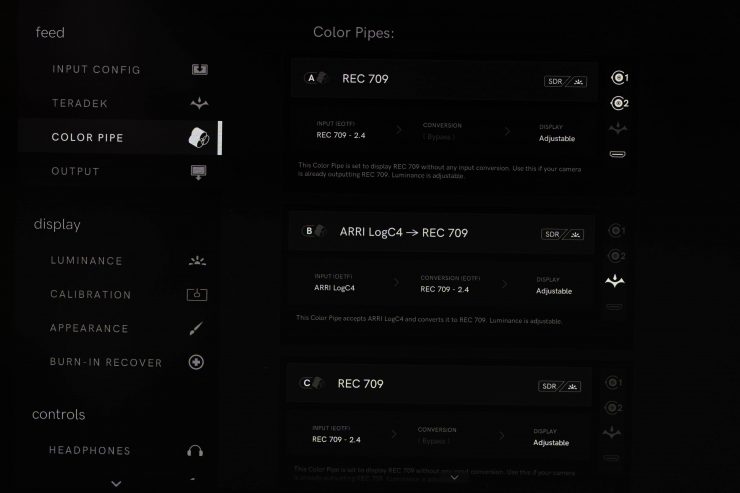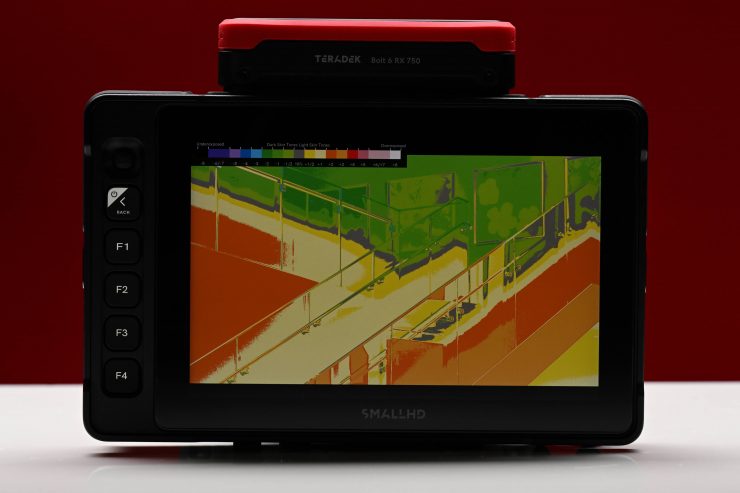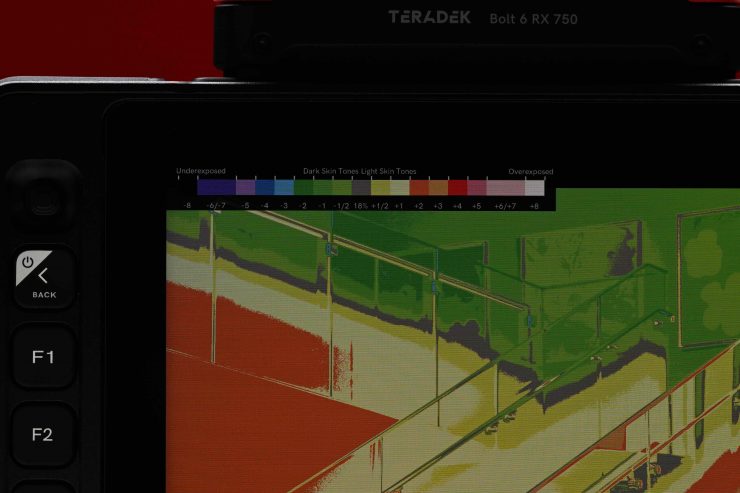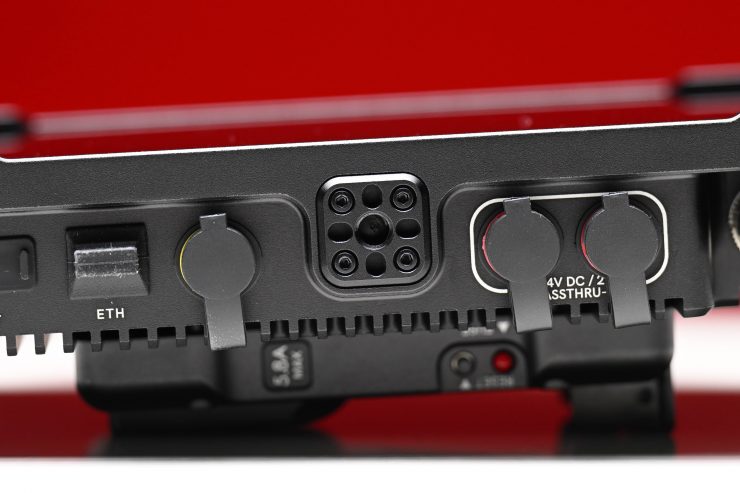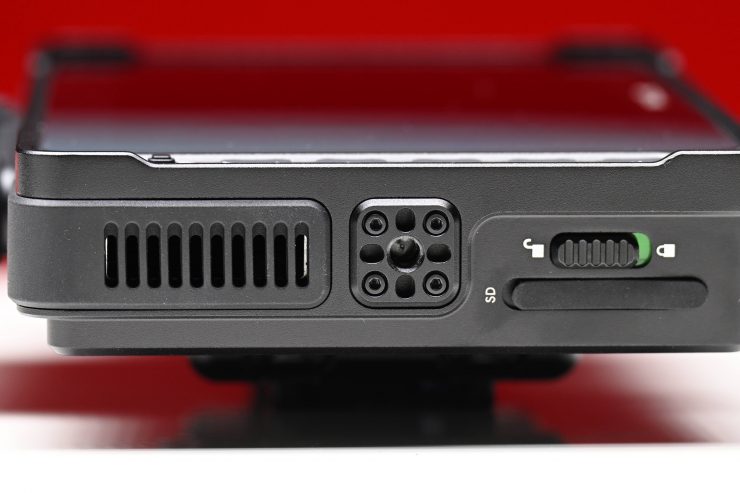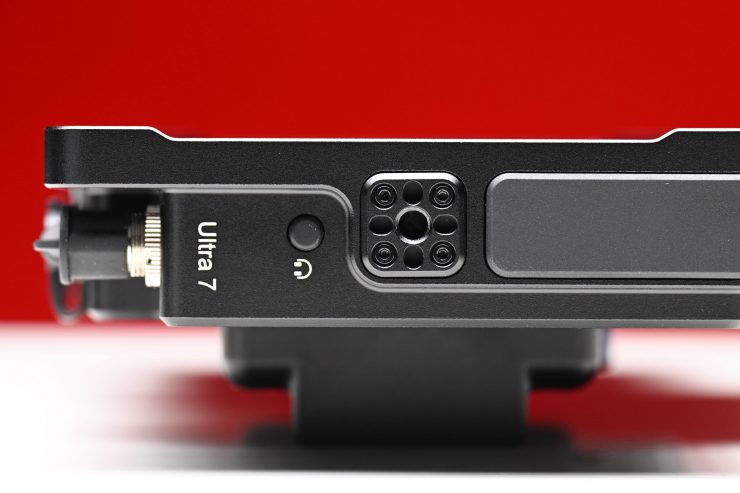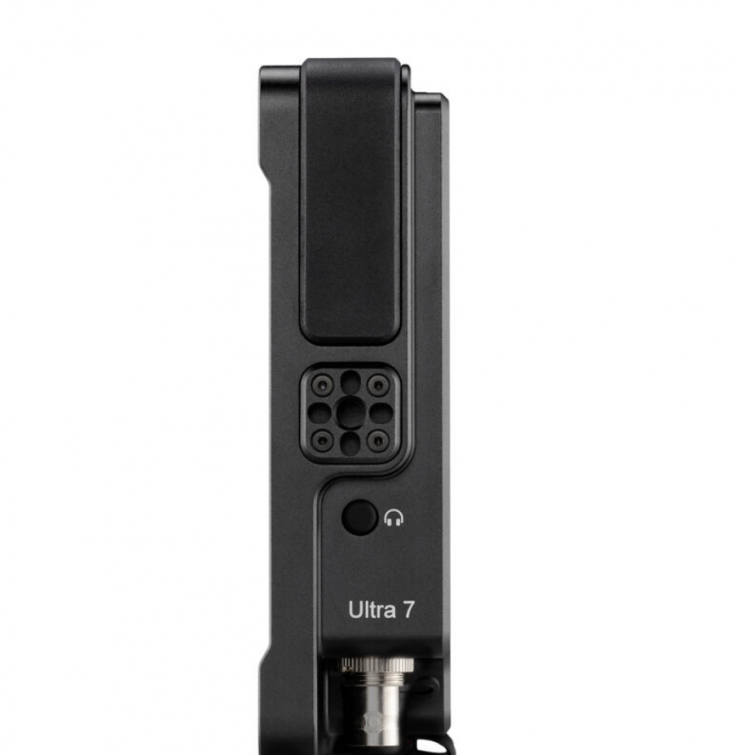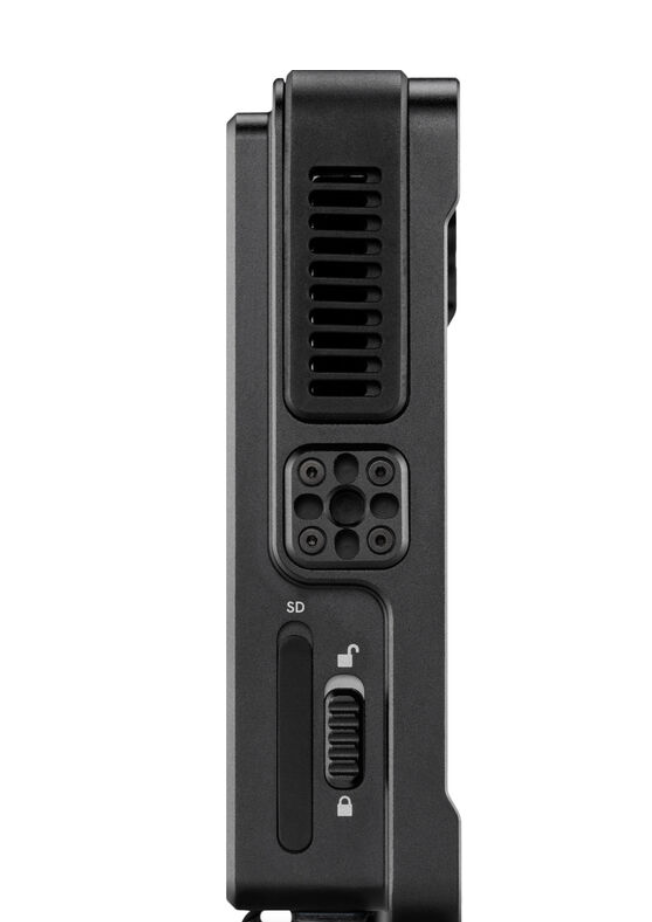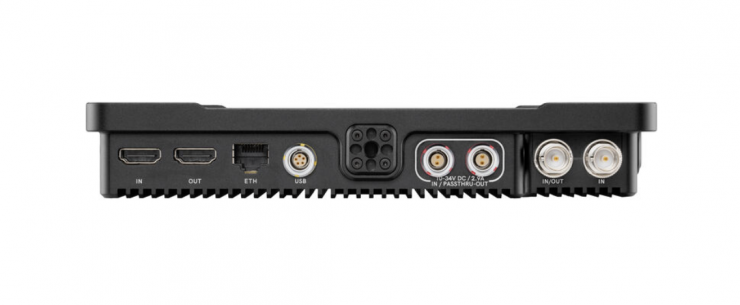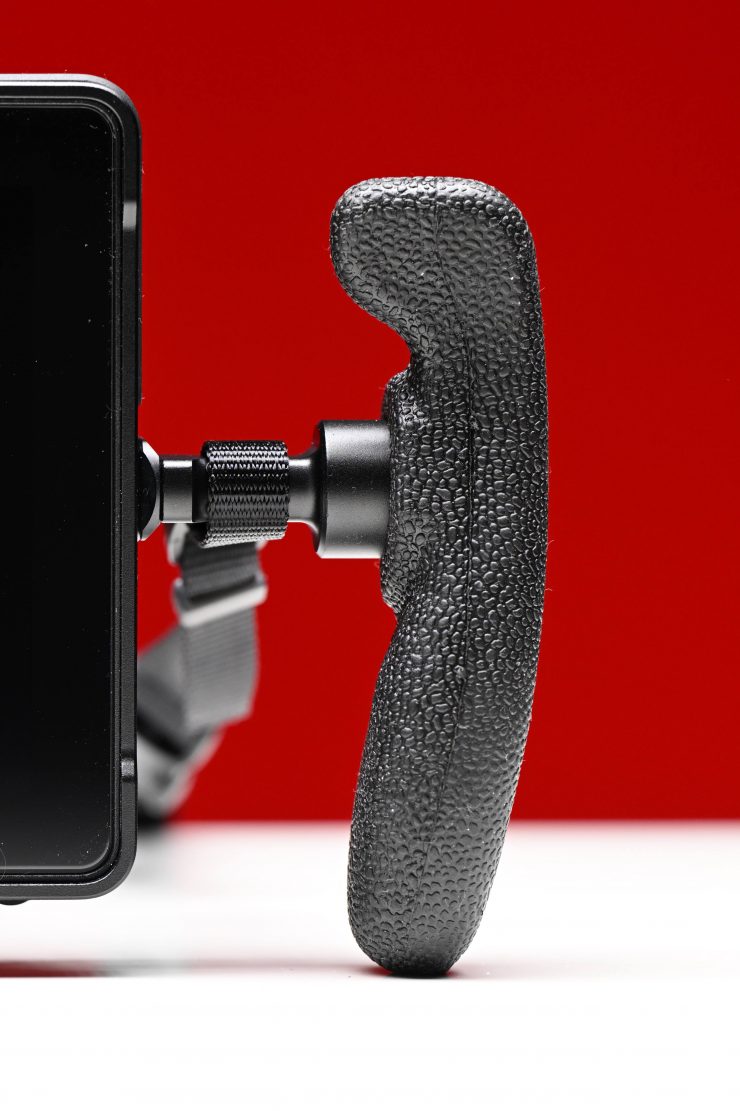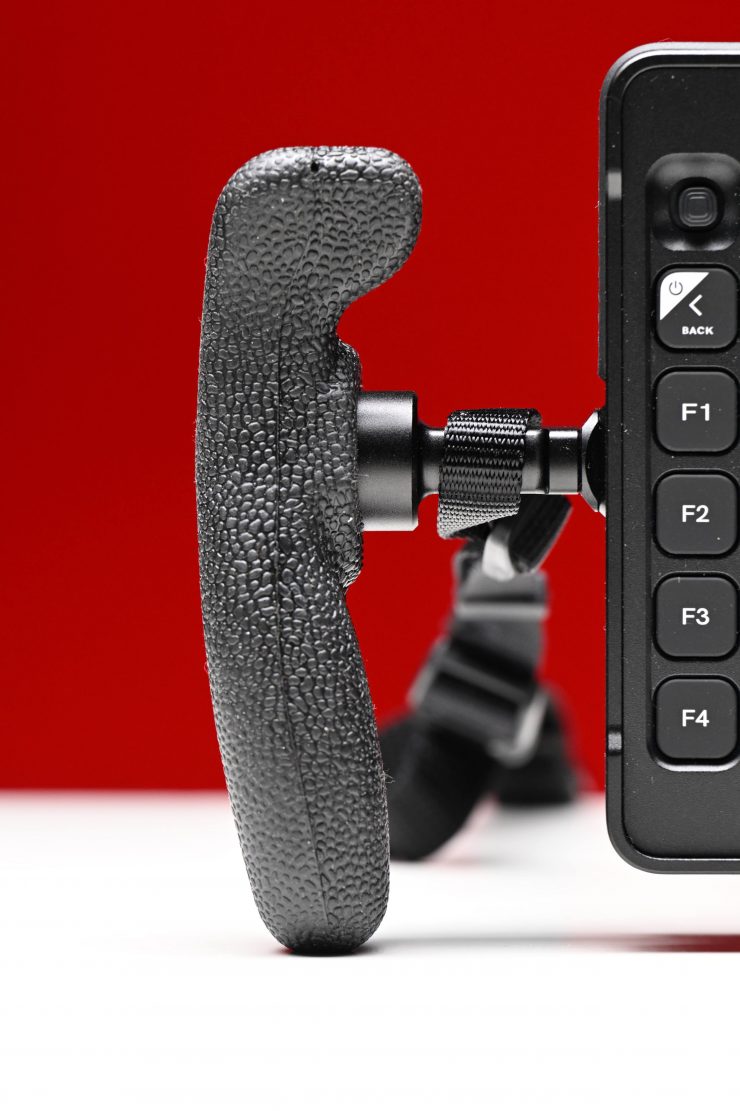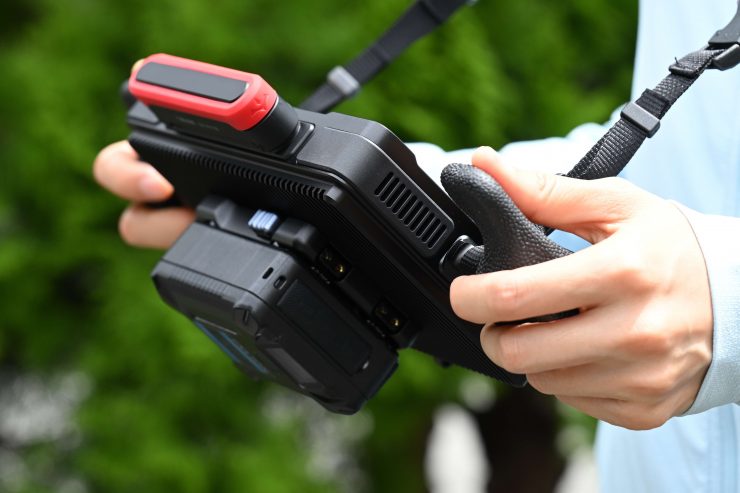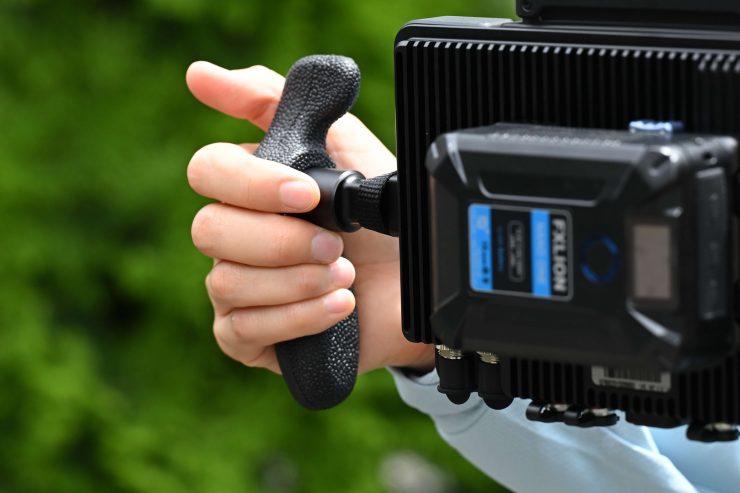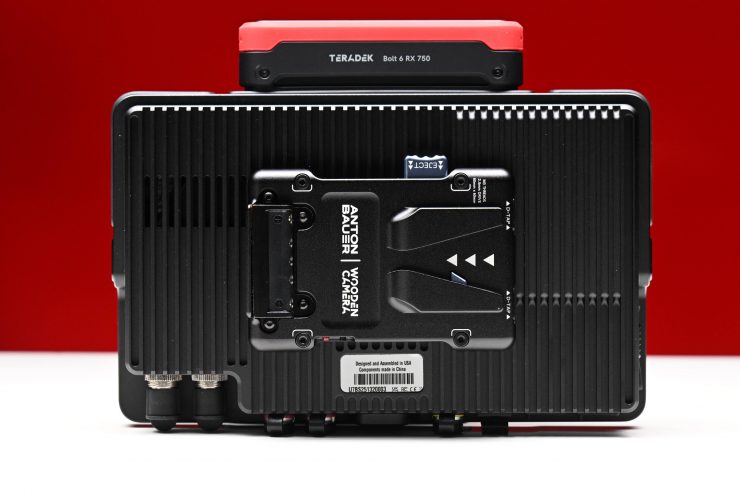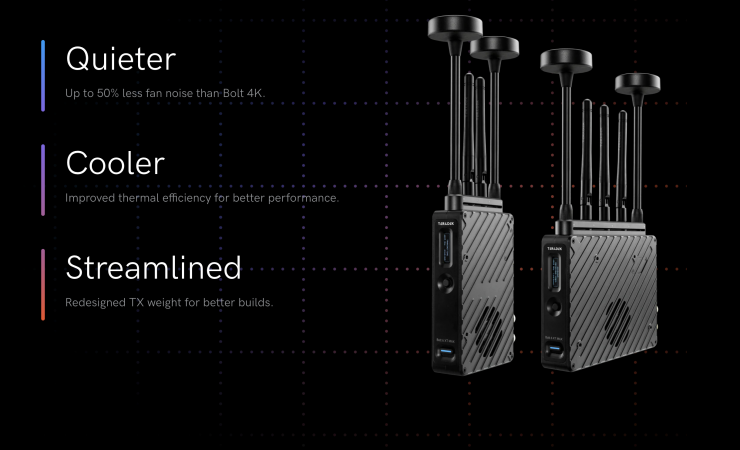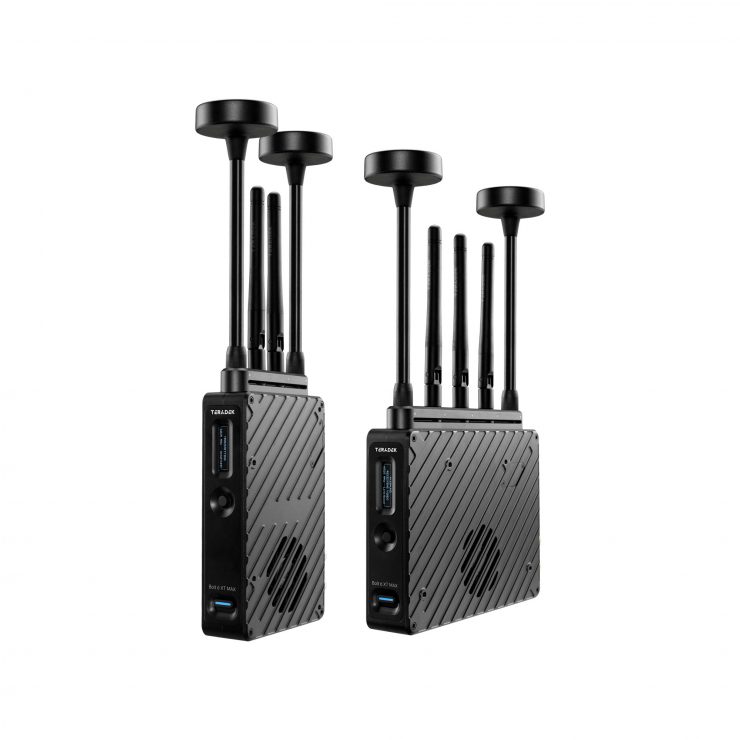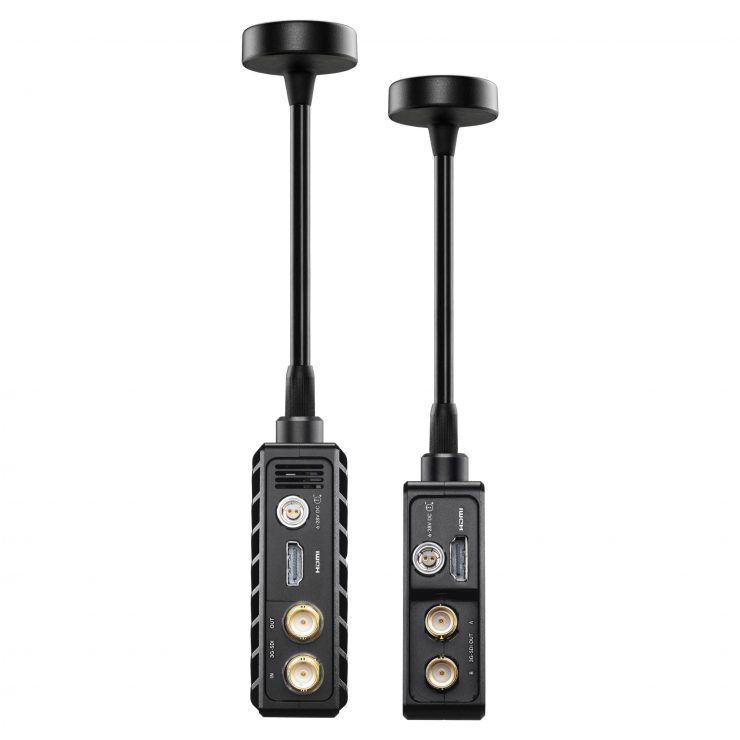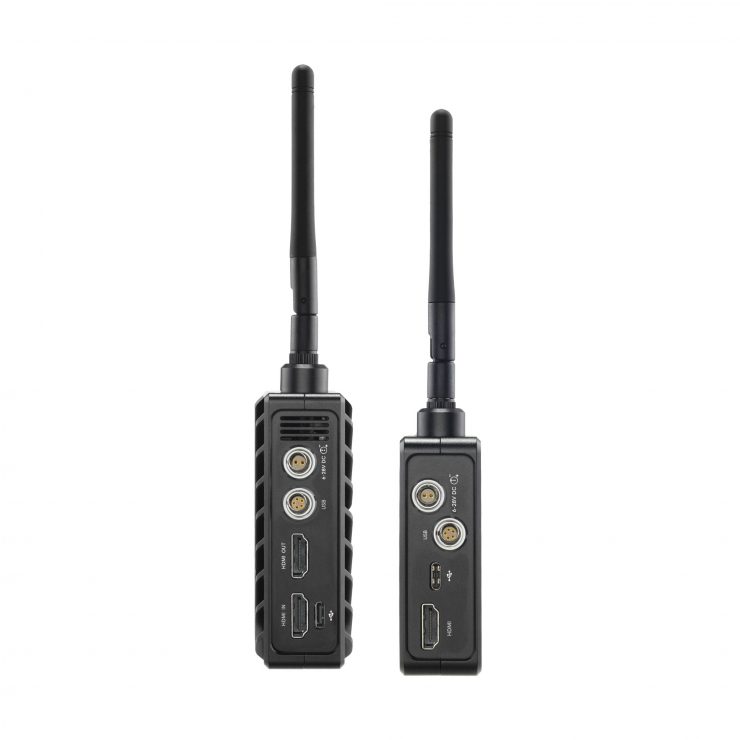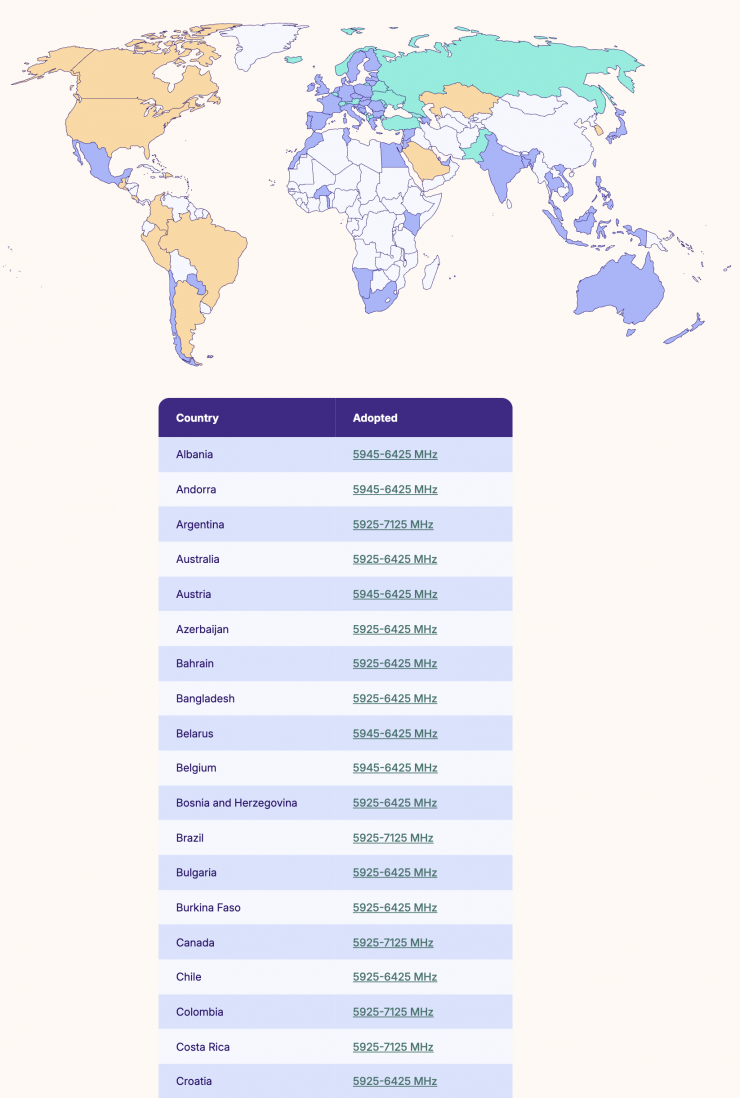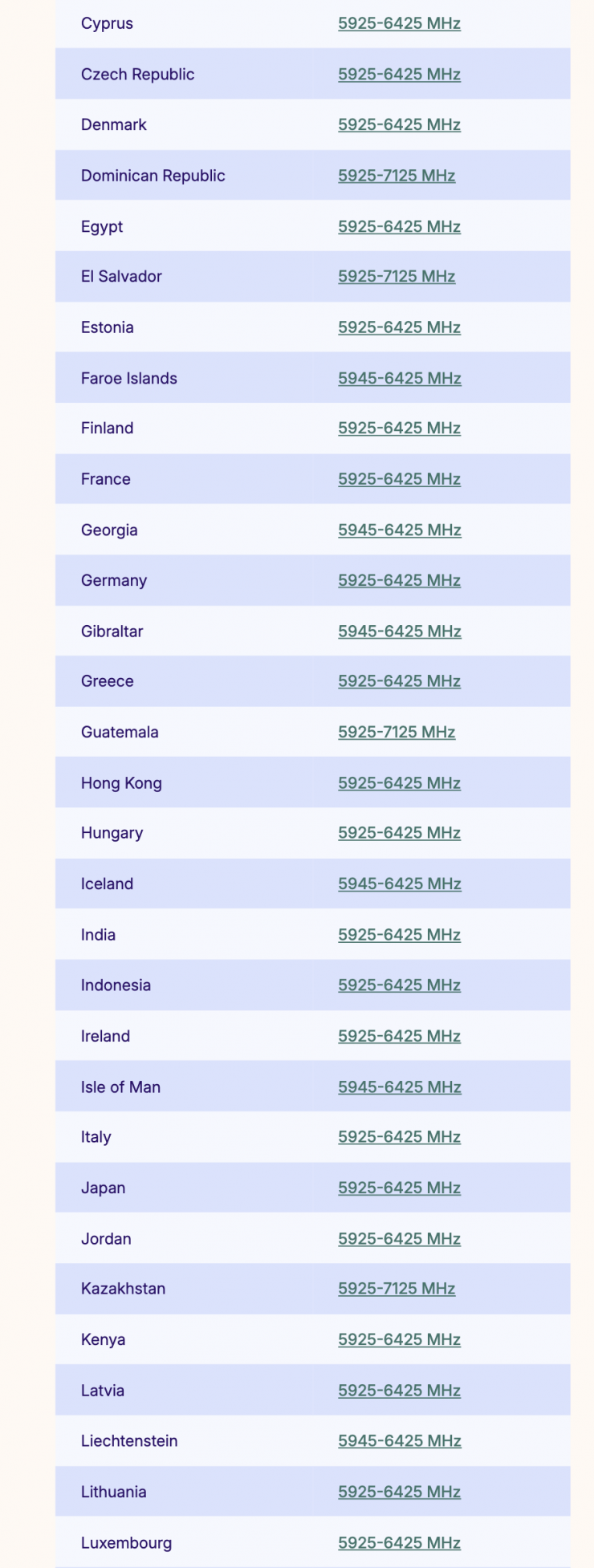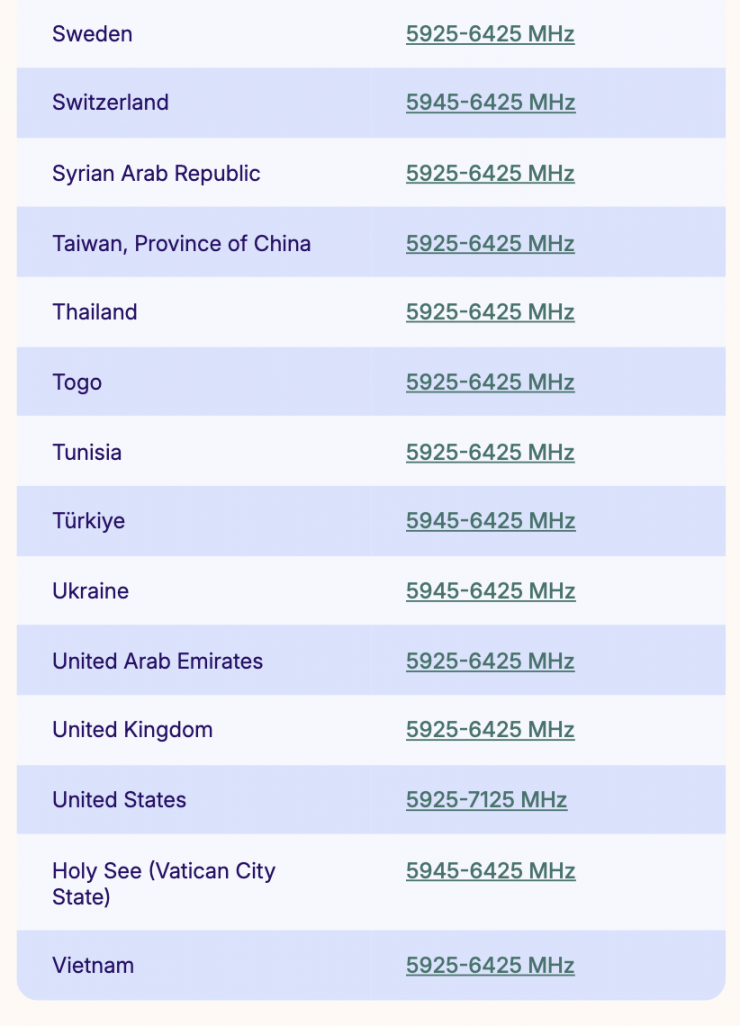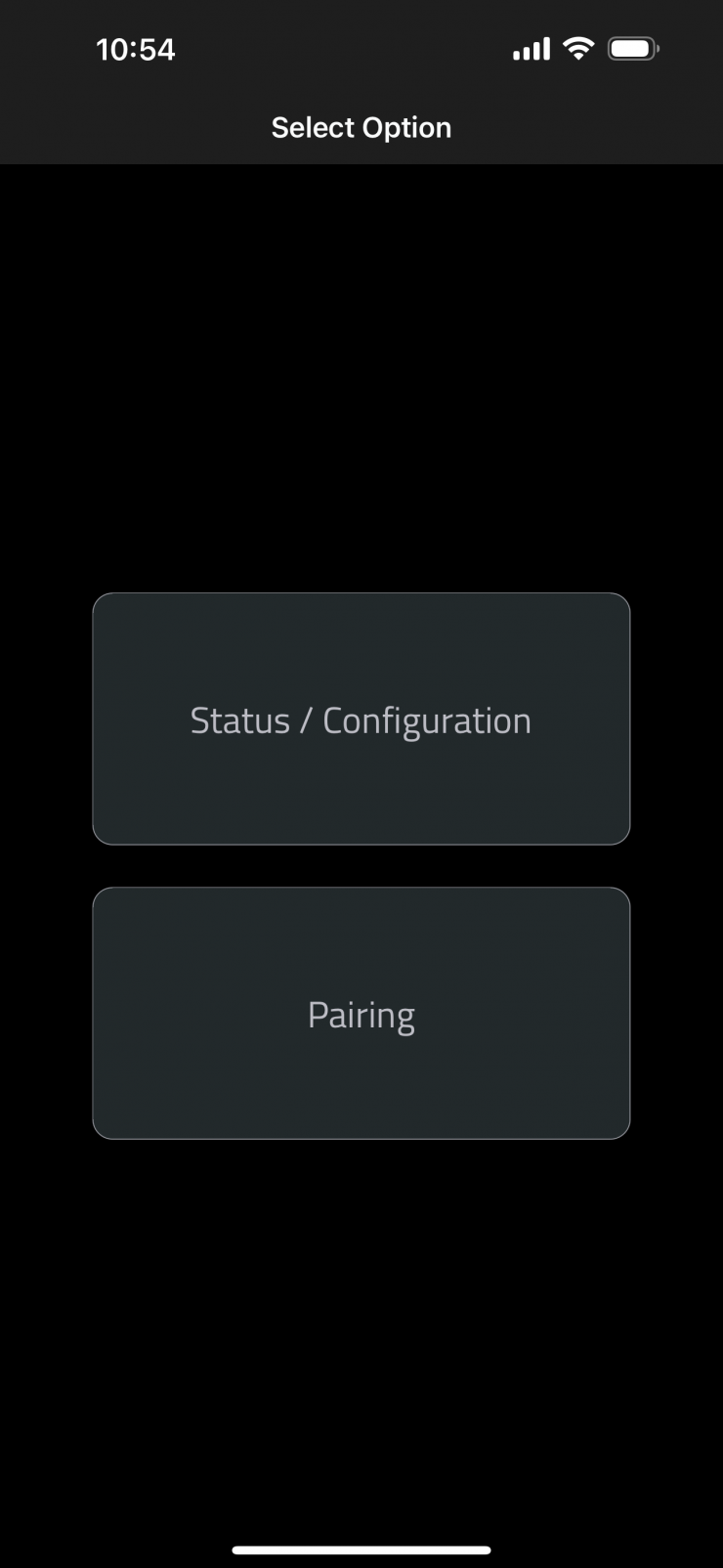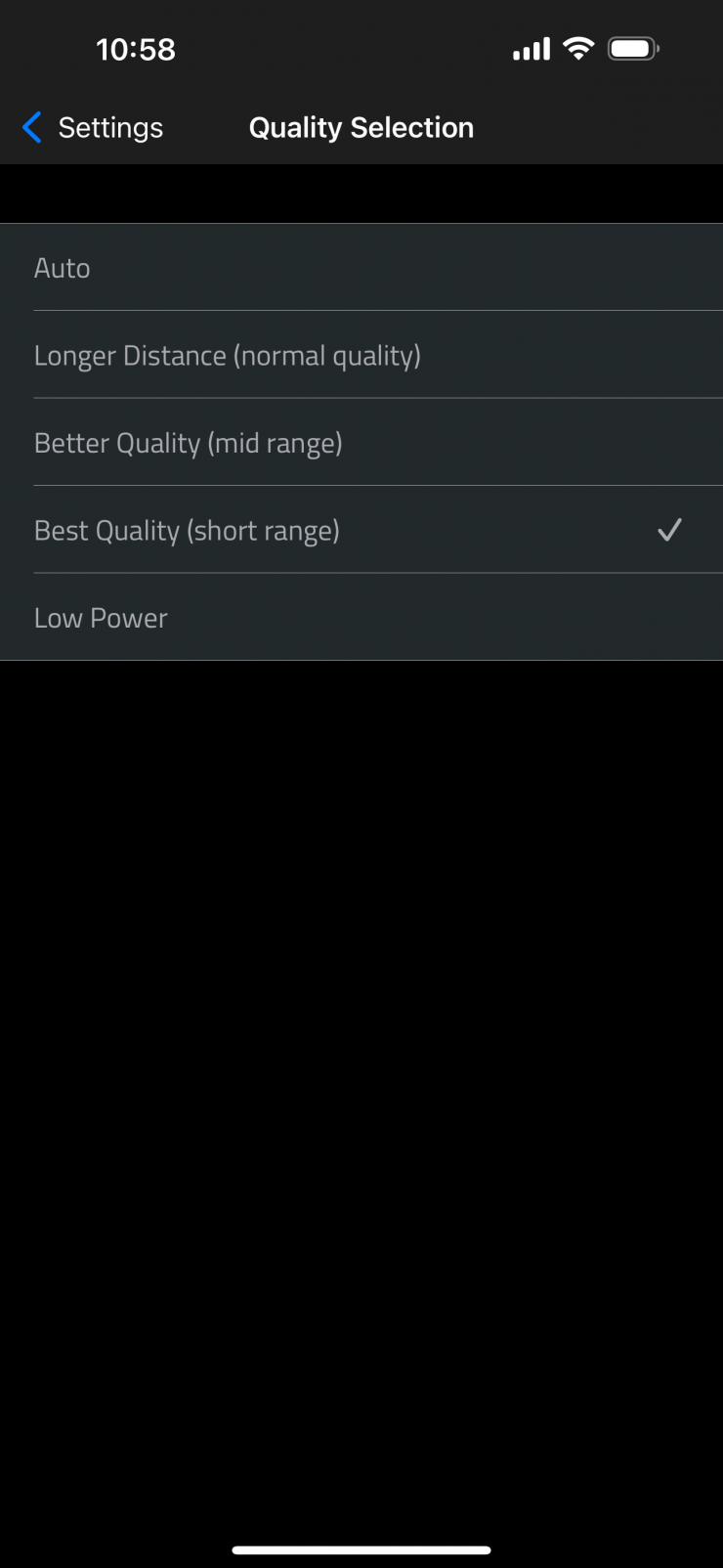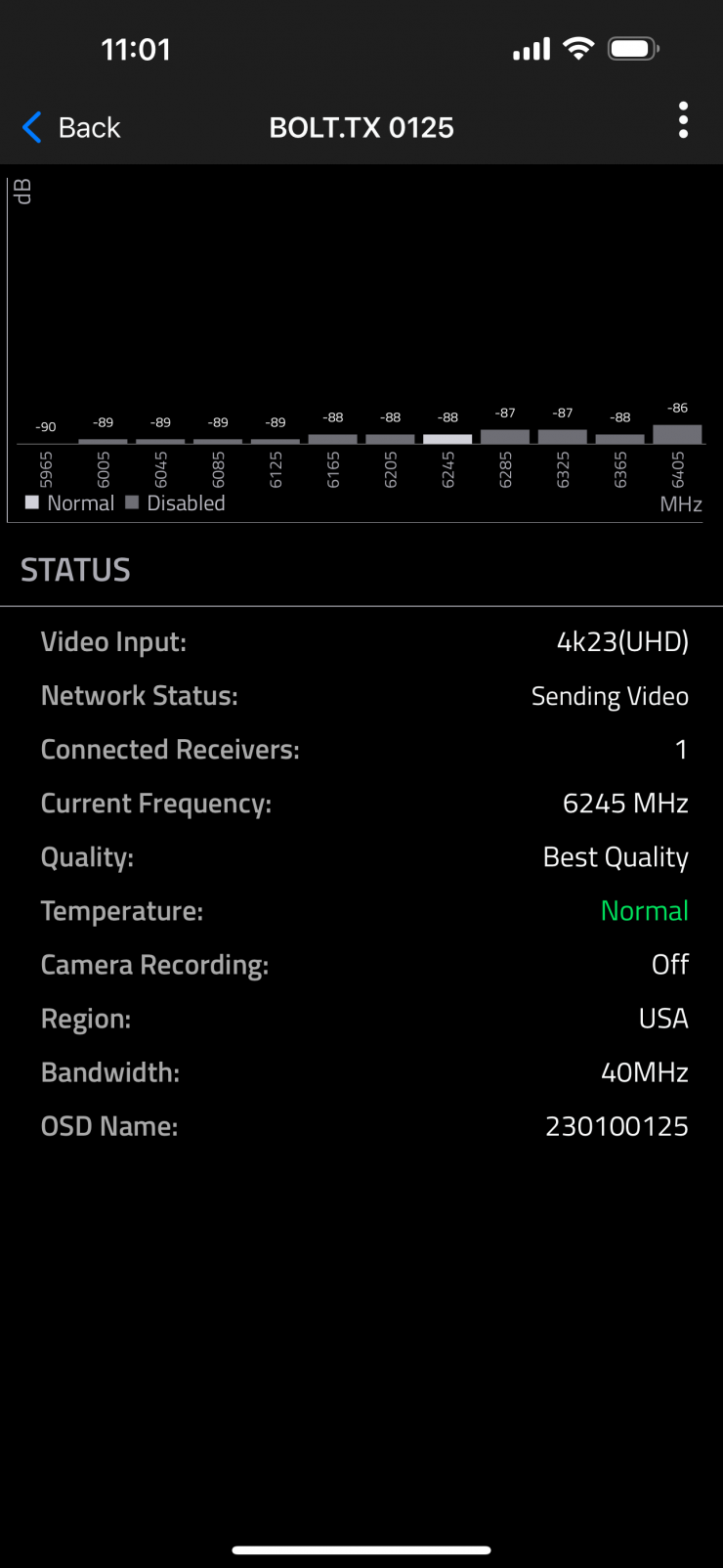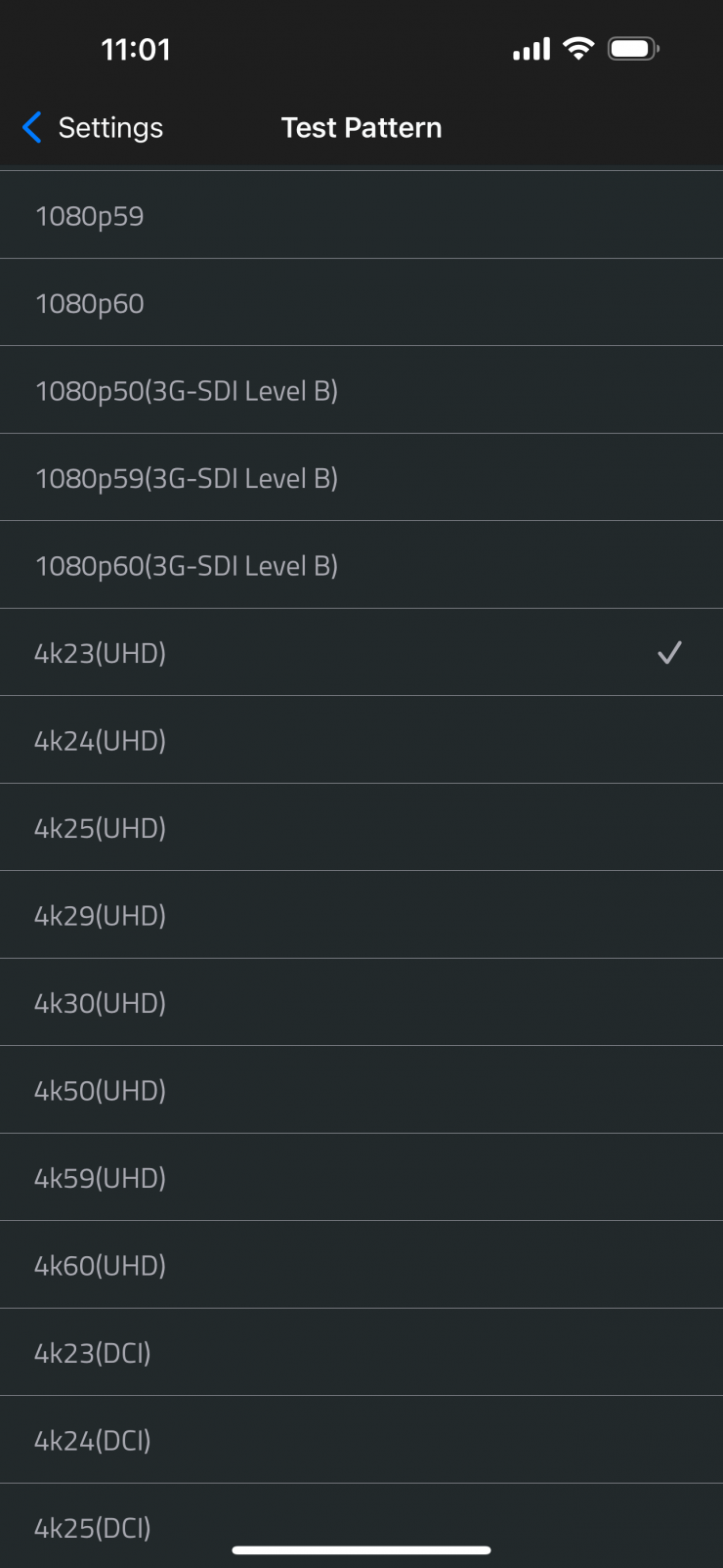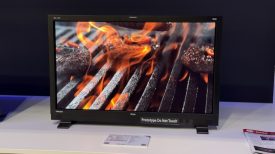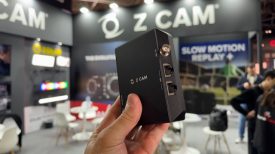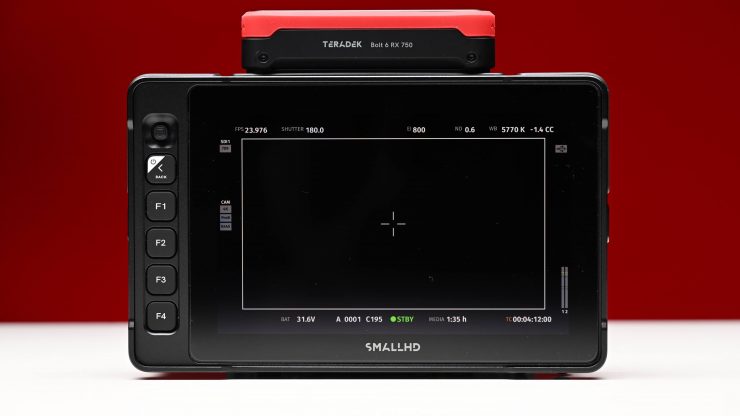
SmallHD announced its Ultra 7 On-Camera Touchscreen Monitor back in January 2024. Essentially, this is a larger version of the ULTRA 5 that I reviewed on the site, and an upgrade from the very popular 703 UltraBright.
PageOS, color accuracy, and build quality are a big part of the success of SmallHD monitors, but with so many affordable monitors on the market, the ULTRA 7 is only going to appeal to a select group of buyers.
SmallHD also has the ULTRA 7 Bolt 6 RX 750 Monitor, which is a version that features a built-in Bolt 6 wireless receiver with the ability to receive 4K signals using 6 GHz Wireless Transmission up to 750′. That is what I am going to be looking at for this review.
Key features
- 7″ 1920 x 1080 Touchscreen Display
- Built-In Bolt 6 Wireless Receiver
- 6G-SDI & HDMI I/O; Up to 4K Video
- V-Mount or Gold Mount Battery Plate
- 6 GHz Wireless Transmission up to 750′
- Bright 2300 cd/m² LCD Panel
- 10-Bit 4:2:2 DCI-P3 Color Gamut Processing; 8-Bit Panel
- 5-Pin USB & Ethernet Control Ports
- Power via 2-Pin LEMO Input
- PageOS 6 with Imaging Tools
Display
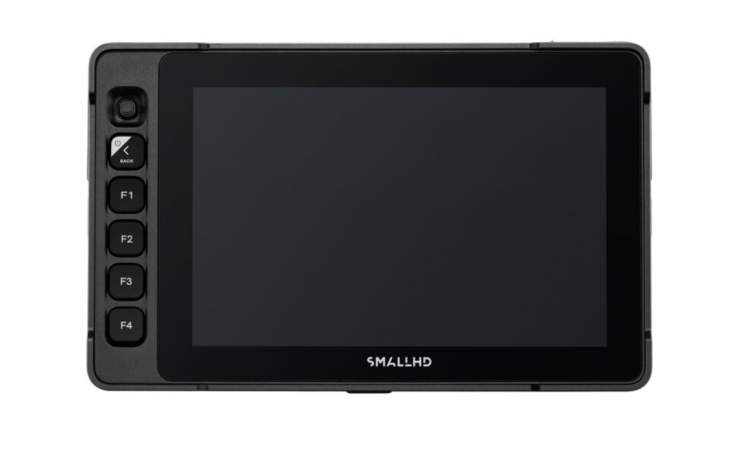
The ULTRA 7 Bolt 6 RX 750 Monitor features a 7″ 1920 x 1080 2300 cd/m² display for viewing in just about any indoor or outdoor environment. I thought this may have been the same panel that is being used in the ARRI CCM-1 that is made by SmallHD, but it doesn’t appear to be.
The ULTRA 7 Bolt 6 RX 750 has a contrast ratio of 1000:1, and it covers 95% of DCI-P3 and 98% of Rec. 709. This is a little disappointing as the ARRI CCM-1 covers 100% of DCI-P3 and Rec. 709.
The Ultra 7 isn’t as bright as the Ultra 5, which features a 3000 cd/m² display. In saying that, from past experience, I have found that larger monitors with 1800-2000 cd/m² can actually appear to be as bright as smaller-sized monitors with more nits.
Size & Weight
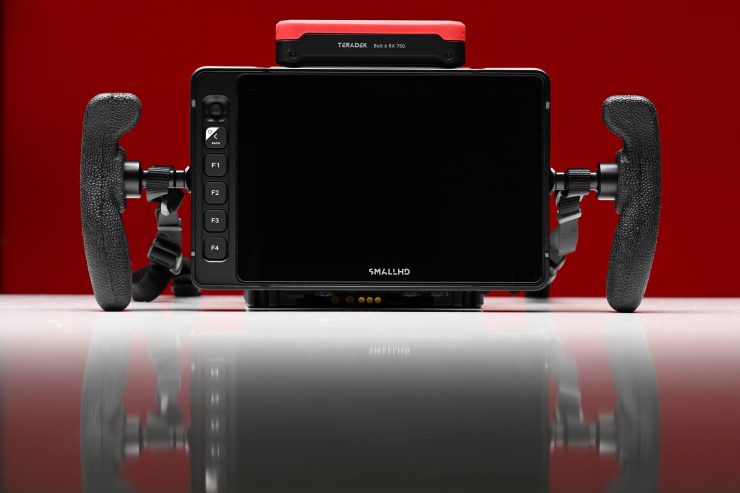
The ULTRA 7 Bolt 6 RX 750 Monitor weighs 1.32kg / 2.9 lbs with the handles, strap, and a mini V-mount battery plate. This is a little heavy, but still very manageable.
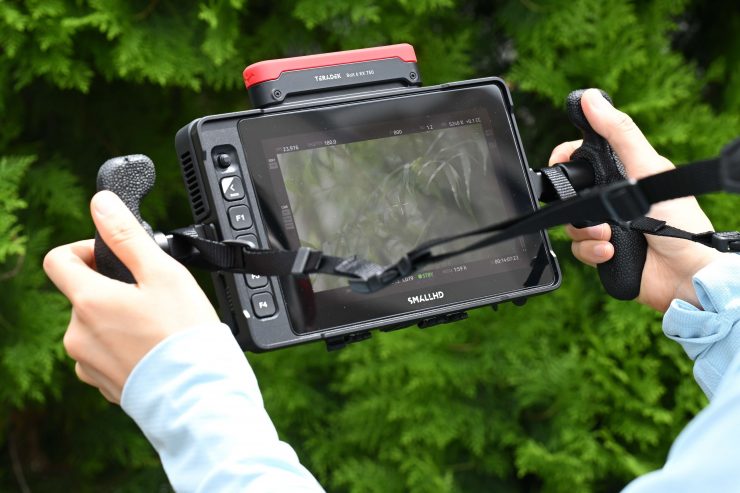
I personally think you need at least a 7″ sized director’s monitor or monitor for pulling focus.
Build Quality
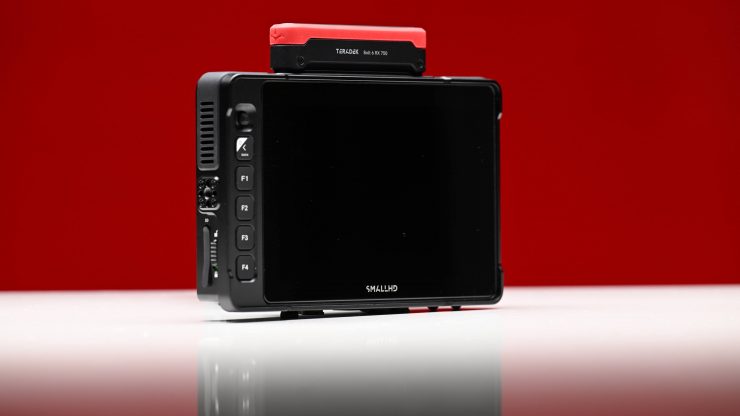
SmallHD monitors have historically had very good build quality, and that is why you see so many of them being used on big productions.
The ULTRA 7 Bolt 6 RX 750 Monitor is very well made. It feels solid to the touch, and it looks like it was designed to stand up to the rigors of set life.
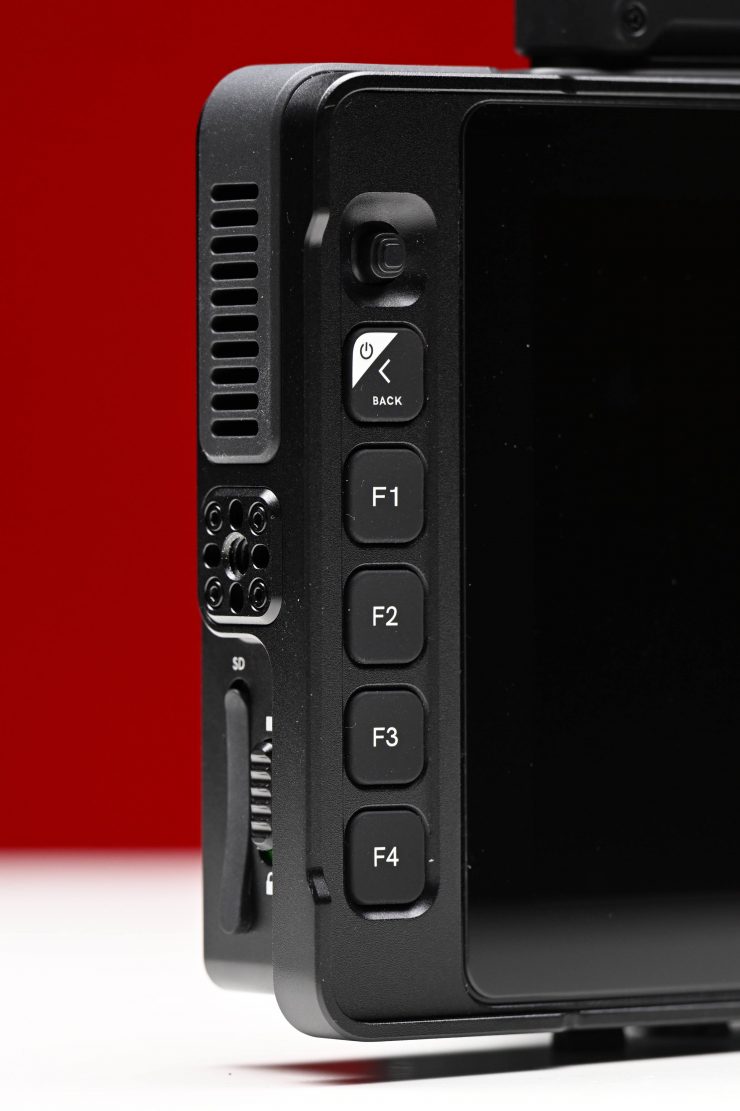
All of the buttons and dials are tactile and responsive.
The monitor has an IP53 rating, so it offers a certain level of dust and water resistance. There are protective covers for all of the ports, which is also a nice touch.
Inputs & outputs
The monitor has 6G-SDI and HDMI input and output ports, and it supports up to UHD 4K video. It will work with ARRI, Sony, and RED cinema cameras thanks to the 5-pin USB and Ethernet control ports.
The monitor includes the following inputs and outputs:
- 1 x BNC (6G-SDI) Output
- 1 x HDMI Output
- 1 x BNC (6G-SDI) Input
- 1 x HDMI Input
- 2x LEMO 10-34V 2-pin 2.9A In/passthrough-out
- 1 x LEMO 5-Pin Output
- 1 x RJ45 Output
- 1 x 1/8″ / 3.5 mm Headphone Output
The ULTRA 7 Bolt 6 RX 750 Monitor offers you a good array of inputs and outputs for a monitor of this size. I personally prefer having all the inputs on the bottom of the monitor instead of having cables sticking out of the side.
In the menu, you can choose the input configuration, and you can upload 3D LUTs via the SD card slot.
Input Signals
3G-SDI Input Types
YCC 4:2:2 @ 10-bits: 1080p60, 1080p59.94, 1080p50, 1080i120, 1080i119.88, 1080i102
6G-SDI Input Types
YCC 4:2:2 @ 10 bits: DCI-4Kp30, DCI-4Kp29.97, DCI-4Kp25, DCI-4Kp24, DCI-4Kp23.98, 2160p30, 2160p29.97, 2160p24, 2160p23.98 YCC 4:4:4, YCC+A 4:4:4:4, RGB, RGB+A @ 10 bits: DCI-2Kp60, DCI-2Kp59.94, DCI-2Kp50, DCI-2Kp48, DCI-2Kp47.95, 1080p60, 1080p59.94, 1080p50, 1080p48, 1080p47.95 YCC 4:4:4, YCC+A 4:2:2:4, RGB @ 12 bits: DCI-2Kp60, DCI-2Kp59.94, DCI-2Kp50, DCI-2Kp48, DCI-2Kp47.95, 1080p60, 1080p59.94, 1080p50, 1080p48, 1080p47.95
HD-SDI Input Types
YCC 4:2:2 @ 10-bits: 1080p30, 1080p29.97, 1080p25, 1080p24, 1080p23.98, 1080psf30, 1080psf29.97, 1080psf25, 1080psf24, 1080psf23.98, 1080i60, 1080i59.94, 1080i50, 720p60, 720p59.94, 720p50, 720p30, 720p29.97, 720p25, 720p24, 720p23.100
SD-SDI Input Types
YCC 4:2:2 @ 10-bits: 480i59.94, 576i52
HDMI Input Types
YCC 4:2:2 @ 12 bits, 8/10/12/16 bit color in RGB & YCC 4:4:4: 3840×2160 30p, 1080p60, 1080p59.94, 1080p50, 1080p30, 1080p29.97 1080p25, 1080p24, 1080p23.98, 720p120, 720p119.88, 720p100, 720p60, 720p59.94 , 720p50, 720p30, 720p29.97, 720p25, 720p24, 720p23.98, 480p240, 480p239.76, 480p120, 480p119.88, 480p60, 480p59.94, 576p200, 576p100, 576p50, 480i240, 480i239.76, 480i120, 480i119.88, 480i60, 480i59.94, 576i200, 576i100, 576i52
Output Signals
3G-SDI Output Types
YCC 4:2:2 @ 10-bits: 1080p60, 1080p59.94, 1080p50, 1080i120, 1080i119.88, 1080i102
HD-SDI Output Types
YCC 4:2:2 @ 10-bits: 1080p30, 1080p29.97, 1080p25, 1080p24, 1080p23.98, 1080psf30, 1080psf29.97, 1080psf25, 1080psf24, 1080psf23.98, 1080i60, 1080i59.94, 1080i50, 720p60, 720p59.94, 720p50, 720p30, 720p29.97, 720p25, 720p24, 720p23.100
SD-SDI Output Types
YCC 4:2:2 @ 10-bits: 480i59.94, 576i52
HDMI Output Types
YCC 4:2:2 @ 12 bits, 8 bit color in RGB & YCC 4:4:4: 2160p30, 2160p29.97, 2160p25, 2160p24, 2160p23.98, 1080p120, 1080p119.88, 1080p100, 1080i120, 1080i119.88, 1080i100, 1080i60, 1080i59.94, 1080i50, 720p240, 720p239.76, 720p200 YCC 4:2:2 @ 12 bits, 8/10/12/16 bit color in RGB & YCC 4:4:4: 1080p60, 1080p59.94, 1080p50, 1080p30, 1080p29.97 1080p25, 1080p24, 1080p23.98, 720p120, 720p119.88, 720p100, 720p60, 720p59.94 , 720p50, 720p30, 720p29.97, 720p25, 720p24, 720p23.98, 480p240, 480p239.76, 480p120, 480p119.88, 480p60, 480p59.94, 576p200, 576p100, 576p50, 480i240, 480i239.76, 480i120, 480i119.88, 480i60, 480i59.94, 576i200, 576i100, 576i51
Audio Output Types
HDMI & SDI – Incoming Audio Stream is sent downstream via HDMI or SDI connection
Physical Buttons
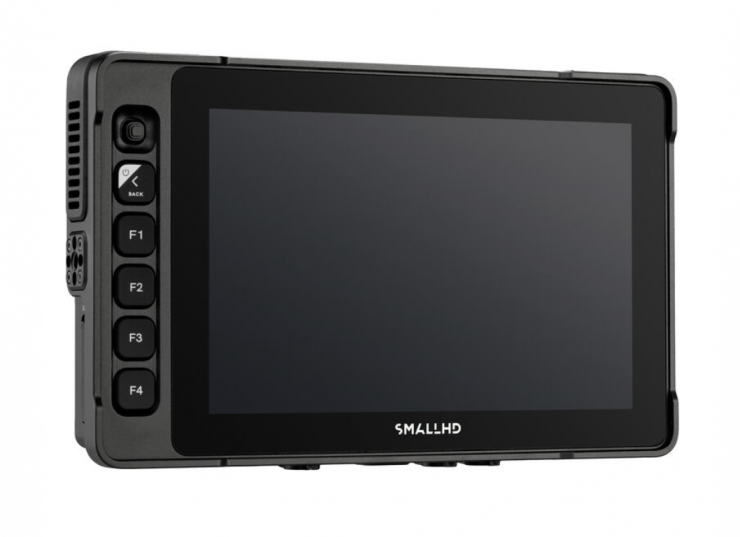
As I previously mentioned, the ULTRA 7 Bolt 6 RX 750 Monitor is a touchscreen monitor; however, it can also be controlled via a button and a joystick, as well as a series of buttons.
If you are familiar with SmallHD monitors that don’t have touchscreen capabilities, you will know that the main operation is done via a small joystick-style button. This is nice and tactile and fairly easy to use. There is also a back button, an input selection button that lets you quickly toggle through which input you want to use.
The joystick-style button on the ULTRA 7 Bolt 6 RX 750 Monitor is located on the front, along with four function buttons that you can customize.
While using the physical controls is still reasonably quick to do, most people will prefer to use the touchscreen functionality because of the increased speed that it offers. I like that SmallHD gives you two control solutions with the ULTRA 7 Bolt 6 RX 750 Monitor, because having touchscreen control is not always ideal, especially if you are working in cold climates or when you don’t want to put big fingerprint marks on the screen.
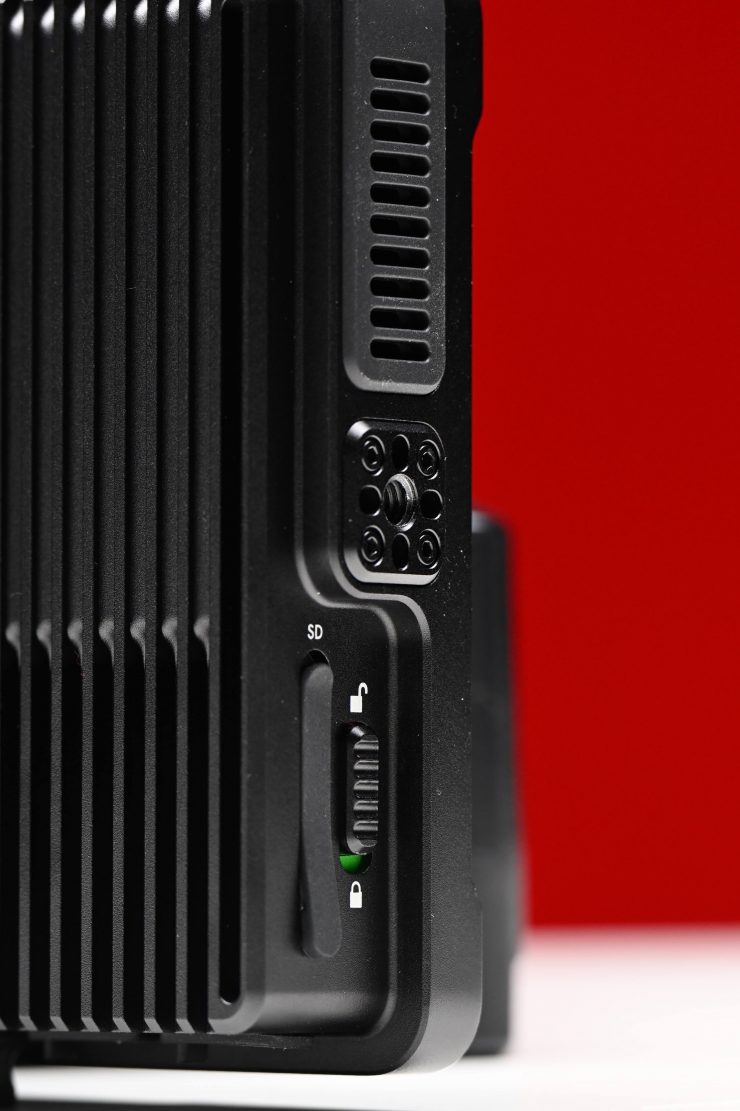
The monitor also has a power on/off button and a lock button. The lock button is handy so you can’t accidentally bring up menus or make changes when it is in the On position.
PageOS 6 operating system
All the functionality of the monitor is available via PageOS, which provides advanced functionality with a simple and efficient graphical user interface.
In my opinion, SmallHD monitors have the easiest OS system to use and operate. There is so much more to a monitor than just image quality, and a good operating system is what often sets monitors apart. Usability and operability sometimes get overlooked by people looking at monitors, but to me, they are right up there with image quality. I own a few different SmallHD monitors, and I like being able to go between all of them and using the exact same menu and operating system. This makes going from one to the other seamless.
Lots of monitors have pretty good-looking images, but a lot of them are let down by poorly designed operating systems and monitoring assist tools that are not in any way accurate. While they have improved in recent years, a lot of companies have come up with OS systems that are arguably a direct result of what SmallHD has been doing.
Like all modern SmallHD monitors, the ULTRA 7 Bolt 6 RX 750 Monitor uses the same PageBuilder OS graphical user interface (GUI). SmallHD built the PageBuilder OS to make menus less confusing. PageBuilder is a very customizable system as it allows you to selectively apply monitoring tools such as waveform, vectorscope, multiview, LUTs, and focusing aids on different “pages”.
The level of customization and features offered in PageOS 6 puts a lot of other monitors to shame.
At least, in my opinion, the PageOS 6 operating system is far superior to any other operating system on the market, especially the ones that you will find in competing 7″ monitors.
The ability to assign color pipes, and to do color space conversions is not something you will find in competing 7″ monitors.
Setting up a correct color pipe is the only way to effectively use EL Zone, which SmallHD was the first monitor company to adopt. Ed Lachman, ASC’s intuitive EL Zone stop-based exposure tool has been improved and it now supports wider dynamic range cameras. EL Zone works like a virtual spot meter, replacing IRE exposure values with stops.
SmallHD’s PageOS 6 was released in late 2024, and it provided quite a few new features and enhanced functionality. Say what you will, but SmallHD is one of the few monitor companies to continually update and improve its UI.
Below, you can see what some of the key new additions were:
Features Added:
- Allow 4K Production Monitor tally/record indicator to be controlled via GPI connection
- Added support for multiplexed SDI inputs
- Support 2x6G and 4x3G 2SI encoded inputs
- Monitors are now compatible with several USB<->Wifi adapters
- Added support for Level B SDI Video for 4K Production Monitors
- Waveform tool added to the Quantum 32
- Sony BURANO + Sony FX6 Camera Control Support (Cine 5, Cine 7, Ultra 7, Ultra 10, Cine 13, Cine 18, Cine 24, Vision 17, Vision 24, OLED 22, OLED 27, Quantum 32)
- Added Dual View to Ultra7
- Added support for Calman integration to Quantum 32
- Added support for a new Vision algorithm (Vision 17, 24)
- Improves highlight rendering
- Improves HDR accuracy and optimizes backlight
Improvements & Alterations:
- Slight improvements to Vectorscope FPS and Image Capture speed
- Updated some UI animations
- Page transition speed is now faster
- Monitor Settings > Interface > Pages
- Added support for a custom bouncing “No Video” icon
- Monitor Settings > User > Personalize
- Luminance Color Pipe Rework
- “Backlight” and “Brightness” has been replaced with the word “Luminance”
- Luminance may now be configured within a Color Pipe
- Color Pipe UI Update
- The Color Pipe UI has been updated to make the system easier to use
- The Crosshatch Tool now allows creating a denser grid
- Improved the granularity of the Zebra thresholds
- Thresholds may now be set based based on either code values or IRE
- Allow capturing two images at once, one with and one without any compatible tools
- Custom Exposure Assist Improvements
- Users may now change the background of a custom exposure map
- Options include: Grayscale, Transparent (Clean), or Spectrum
- Allow users to load custom exposure maps as an image file (1024 wide .png) from removable media
- Users may now change the background of a custom exposure map
- Color Pipes now support the following additional white points: D93, D56, D60
- When function button tools are deactivated, they are removed from the toolbar
- Manual Adjustments may now be tuned per-Color-Pipe
- By default, everything will work as it did in previous versions
- Calibration settings menu now has an option to enable “manual adjustment sets”
- When exposed, there will be 8 sets of manual adjustments that may be configured on the monitor. Factory and User calibrations must each be assigned to one of those 8 sets
- Color Pipes may also be assigned to a manual adjustment set. By default, each Color Pipe will use the manual adjustment set of the current calibration. However, they can be configured to instead override that value with a different set of manual adjustments
- Function Button Tooltips now indicate function state (on vs off)
- Exposure Assist legend may now be placed vertically
- Opening the Studio Brightness menu no longer automatically displays a white patch
- Adjusted the EL Zone scale, replacing the colors of white and black with light red and dark purple
- Allow users to alter the record tally UI element’s appearance in the Metadata tool
Bugs Fixed:
- Fixed bug causing User Conversion LUTs in Color Pipes to be applied incorrectly
- Resolved audio data from a BlackMagic PIX-E5 not being detected by SmallHD monitors
- Resolved interactions between the Input Tool and Image Capture on Record Start
- Camera Control – Scrubbing in playback mode on ARRI cameras no longer changes Pages
- Fixed a case of incorrect Color Pipes being applied to Multi Pages, when more than one multi-view page was present on the monitor.
- Resolved flickering on a Multi Page when receiving some PsF formats
- Fixed issues with 8 channel SDI Audio on 4K production monitors
- Fixed audio issues when more than 8 channels are present
- Super Pixel Scaling was not working, monitors continued to use interpolation
- Resolved video range issues that came about when different Color Pipes were assigned different video ranges
- Resolved discrepancies between Color Picker and Exposure Assist
- Restored the missing “Burn-in Recovery” settings element
- Lock Switches now function after reboot
- Focus Assist lines now persist after a reboot
- Focus Assist now functions correctly when bound to a function button
- Fixed rare instances of legal range video not being displayed correctly in calibration wizard
- On 4K Production Monitors, Image Overlay no longer dims the image when the source media is removed
- Fixed Low Voltage Warning sometimes not appearing
- General UI improvements
- Fixed several video format issues
- Ultra 5 TX Output toggle no longer causes wireless video issues
- Image Overlay no longer obscures aspect and safe guides
- Activating Image Capture no longer causes the color picker tool to deactivate
SmallHD recently released the PageOS 6.2.0 update.
Features Added:
- Square Division Multiplex Signal Support
- Supporting Square Division multiplexed signals must be done by enabling the new toggle switch in the “Input & Output” settings menu
- Tools and Pages are disabled when Square Division mode is activated
- Dials may now be bound to Camera Control functions (Ultra 10, Quantum 32)
Bugs Fixed:
- Resolved an issue using Calman for calibration on Vision monitors
- Resolved visible ‘dithering’ on Cine 7 introduced in the 6.1.0 update
- Improved luminance accuracy when using Judd Offset + Manual Adjustments
One of the main reasons I personally like SmallHD monitors is that they continually update and add features and improvements to their monitors. With almost all of the cheaper monitors on the market, what you buy is what you get, and it is very rare to see firmware updates or new features added.
Mounting
SmallHD provides a lot of mounting points on the monitor, which is nice to see. There are mounting points on all four sides of the monitor, which gives you a lot of versatility.
The optional SmallHD Monitor Handles and Neck Strap are available if you plan on using the ULTRA 7 Bolt 6 RX 750 as a portable director’s monitor.
They are easy enough to install, but I found that the handles don’t tighten down that well, and they tend to twist, no matter how much you tighten them. The handles themselves are also a little sticky and could be made out of better material. SmallHD has stuck with the same handle design as the old Cine 7 RX. It wasn’t good then, and it isn’t good now.
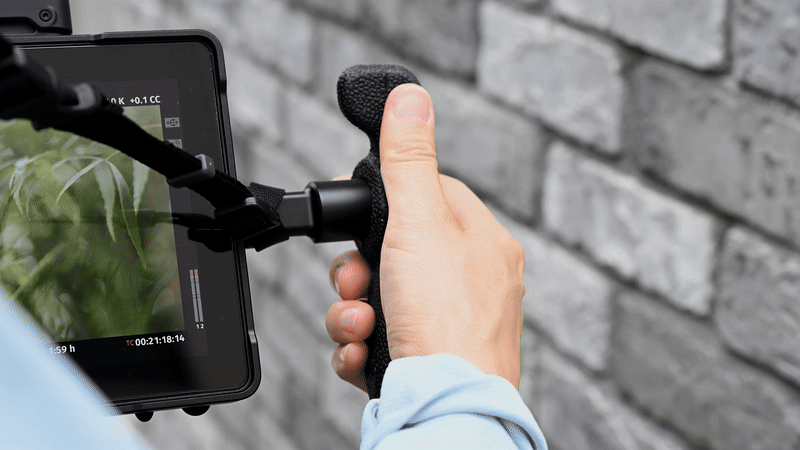
The handles move around and come loose, and then get to a point where they come off way too easily.

Inside the handle, you can see that the rubber gets removed as well.
I had an instance where someone was holding the handle, and it came off. If that person hadn’t had the neck strap on, it would have fallen to the ground.
I would have preferred to have seen SmallHD come up with a quick-release system for the handles and use better materials. At least in my opinion, the handles are not up to the task, especially on a high-end product like this.
Power
Power is delivered to the ULTRA 7 Bolt 6 RX 750 Monitor via 2-pin LEMO ports or separately available Gold/V-mount micro battery plates. The SmallHD Micro Battery Plate for Ultra Series Monitor (V-Mount) is $249.99 USD, which is a lot of money for a battery plate.
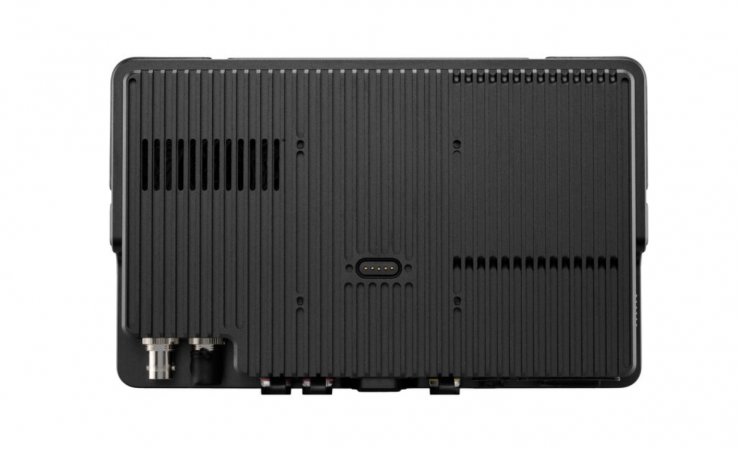
I like that the micro battery plates integrate directly with a pin connection on the back of the ULTRA 7 Bolt 6 RX 750.
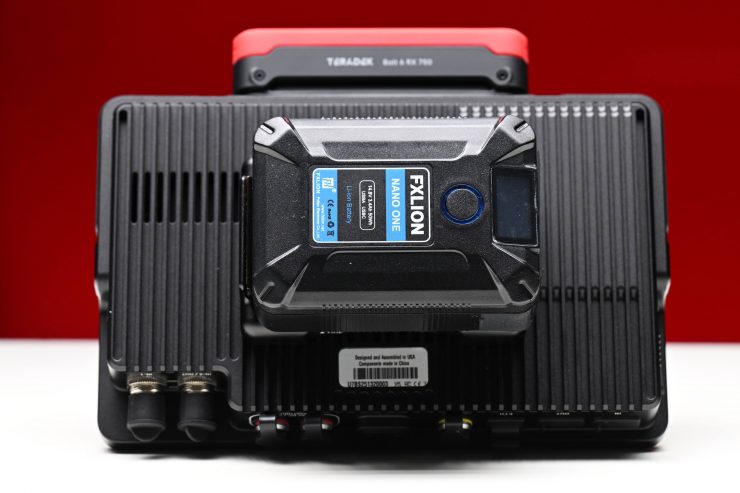
This means you don’t have to run any additional cables. You just put a battery on, and you are good to go.
What about the heat?
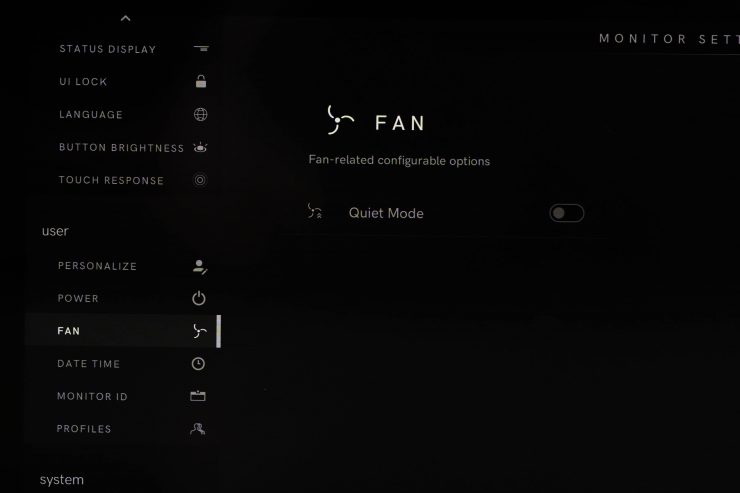
The ULTRA 7 Bolt 6 RX 750 monitor has an IP53 rating, but it isn’t completely sealed. It does feature an internal fan, but that is extremely quiet. You can also turn on a Quiet Mode, where the fan will operate at the lowest possible speed that still protects the monitor.
Driving a 7″ high bright display and a Bolt 6 RX generates a lot of heat, and even though the chassis features heat sinks, it still gets very hot.
When you are using the optional handles, this isn’t a huge issue, but if you are just holding the monitor, it gets almost too hot to touch.
Power up time
I hate monitors or products that take too long to boot up before you can use them. The ULTRA 7 Bolt 6 RX 750 boots up reasonably quickly. I timed it at about 10 seconds from the time I turned it on till I got a picture up on the screen from a connected Bolt TX.
Integrated Bolt 6 RX 750
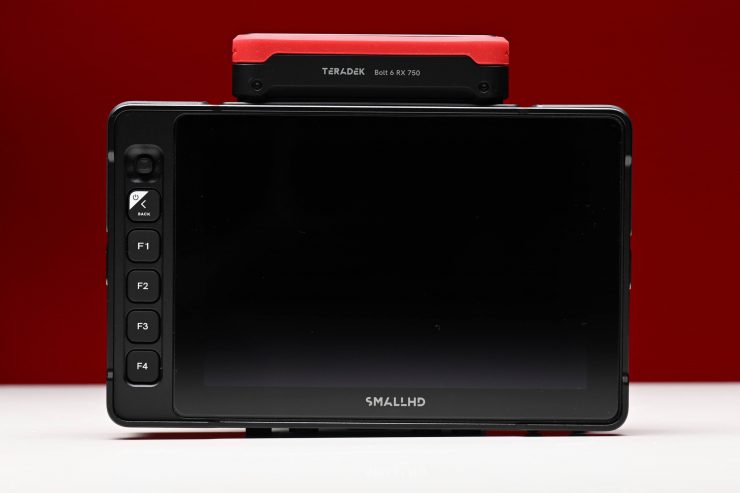
The whole philosophy behind the ULTRA 7 Bolt 6 RX 750 is simplicity. By integrating everything you need into one compact solution, you take away some of the pains of traditional wireless monitoring. You only need to power one device, don’t need to mount one product to another, and you don’t need to run any cables. Keeping things simple allows filmmakers to spend more time actually creating instead of worrying about equipment.

The downside of having an integrated wireless RX unit is that it isn’t replaceable.
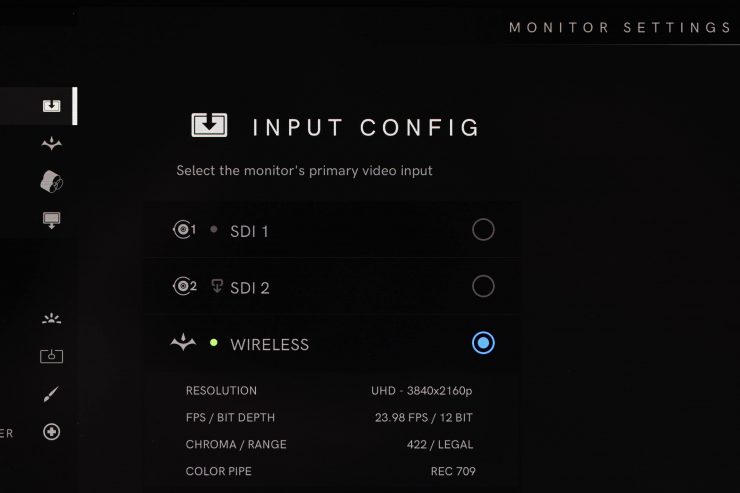
In the monitor’s menu, you simply select the input source as Wireless if you want to view a picture coming from a paired Bolt 6 TX.
You will also get information about what the resolution, frame rate, bit-depth, etc., is being received.
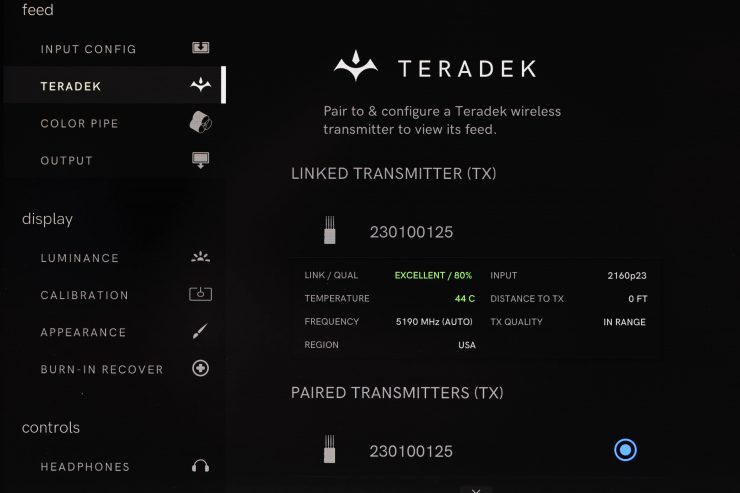
The system will also tell you what TX it is paired to, the link quality, input, frequency, etc. All of these are very handy to know.
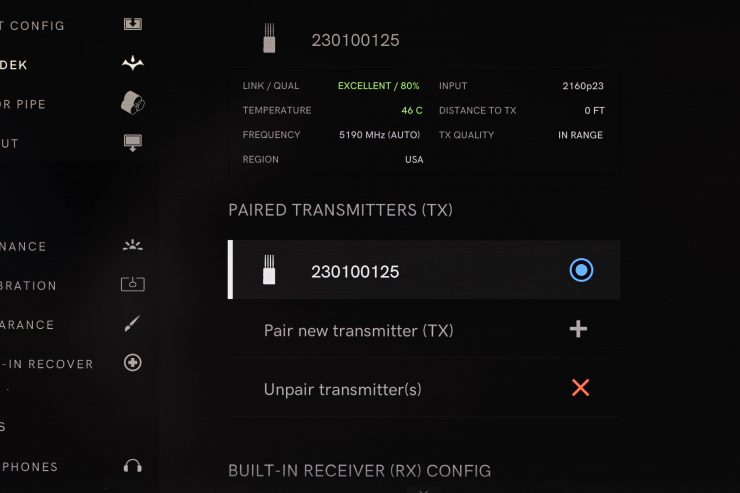
You can also pair a new TX device and unpair the one that is currently connected.
Bolt 6 Background
The Bolt 6 Series is claimed to be able to deliver crystal-clear 6GHz transmission in high-traffic environments while remaining fully cross-compatible with the entire Bolt 4K BB3 ecosystem. The Bolt 6 Series now joins the zero-delay Bolt 4K family in the recently unlocked U-NII 5 frequency spectrum. This allows users to operate in the untapped bandwidth while remaining fully compatible with Bolt 4K on traditional 5GHz bands.
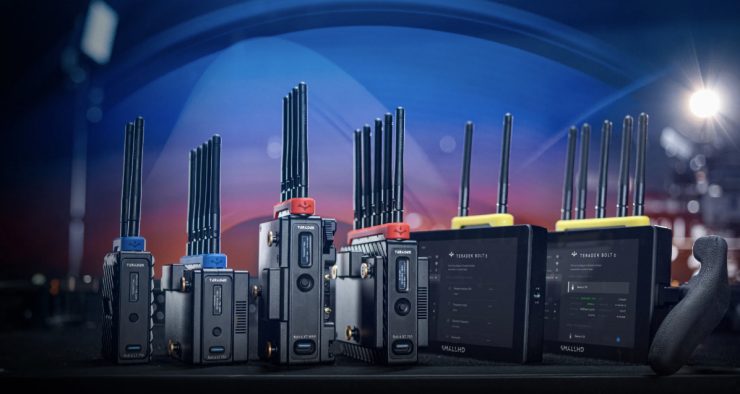
Every Bolt 6 device will pair with every Bolt 4K device on 5GHz bands, however, a Bolt 6 TX/RX combination is required for 6GHz connectivity.
What is the 6GHz frequency band?

Well, I am glad you asked. The 6GHz is a 1200 MHz spectrum from 5,925 to 7,125, whereas the 5GHz frequency band is a 500 MHz spectrum. Essentially, 6GHz was introduced to significantly reduce traffic in the already crowded 2.4GHz and 5GHz spectrums.

Now, 6GHz isn’t available everywhere around the world, but quite a few countries have started to open up the 6GHz spectrum for Wi-Fi and unlicensed usage.
Above, you can see data from the WiFi Alliance that shows you what countries have adopted 6GHz and what countries are still discussing its implementation.
Wi-Fi traffic is doubling every three years, and the 6GHz spectrum is key to dealing with this problem. Wi-Fi networks that have access to the full 6GHz band would be able to support three to four times as many simultaneous users as existing Wi-Fi networks.
With wireless video transmission, you want to operate in frequencies with the least amount of interference and traffic possible, and this is why 6GHz devices make a ton of sense.
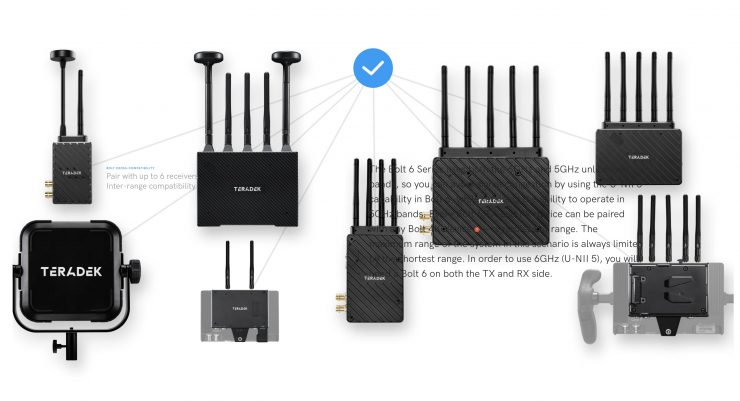
The Bolt 6 series can transmit and receive images and audio over the newly available 6GHz frequency band as well as the industry-standard 5GHz, which dramatically reduces signal congestion in challenging RF environments.
It is fully cross-compatible across all Bolt 4K devices, including the Bolt Manager App for iOS and Android. Every Bolt 6 device will pair with every Bolt 4K device on 5GHz bands; however, a Bolt 6 TX/RX combination is required for 6GHz connectivity.
Use it as an on-camera monitor
Now, if you don’t want to use the ULTRA 7 Bolt 6 RX 750 as a Director’s monitor, you could just attach it to a camera with an SDI cable. This does make it quite versatile. Some wireless monitors don’t have any inputs, so you are stuck using them in one capacity.
Camera Control
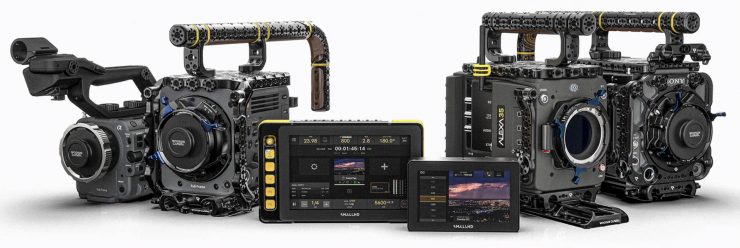
With the ULTRA 7 Bolt 6 RX 750, you can do camera control remotely, but the catch is that you would also need to have a compatible SmallHD monitor attached to your camera that can also do camera control. It would be great if Teradek implemented a system where you could connect a Bolt 6 to a camera and then have the TX transmit the camera control protocols.
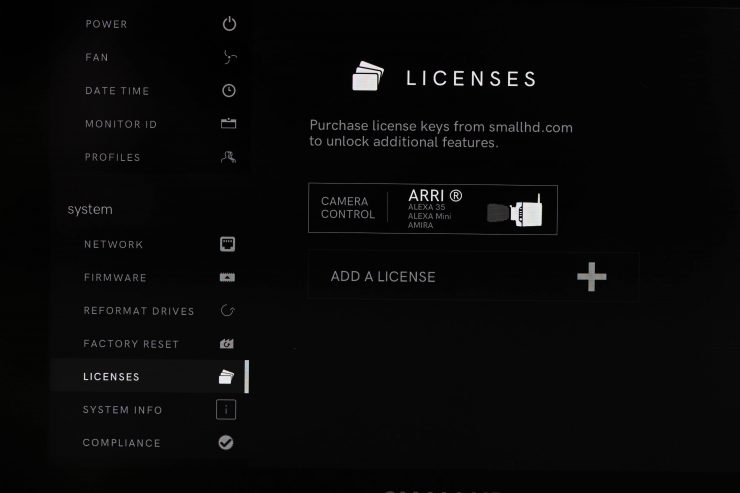
This would require you to buy two camera control licenses, and the licenses are not cheap.
Image quality
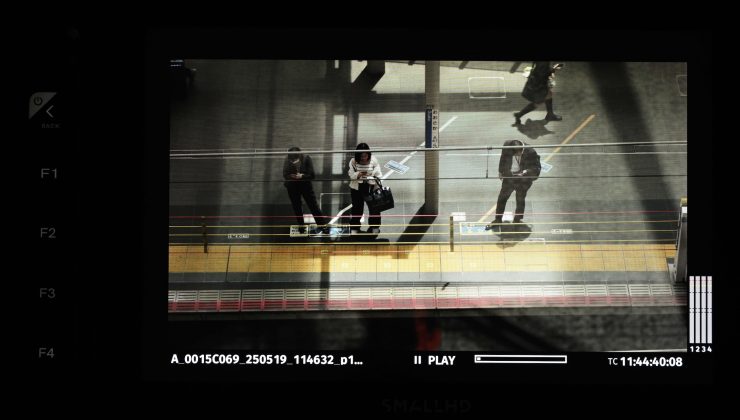
At the end of the day, if a monitor can’t display accurate images, then it doesn’t matter how many bells and whistles it has.
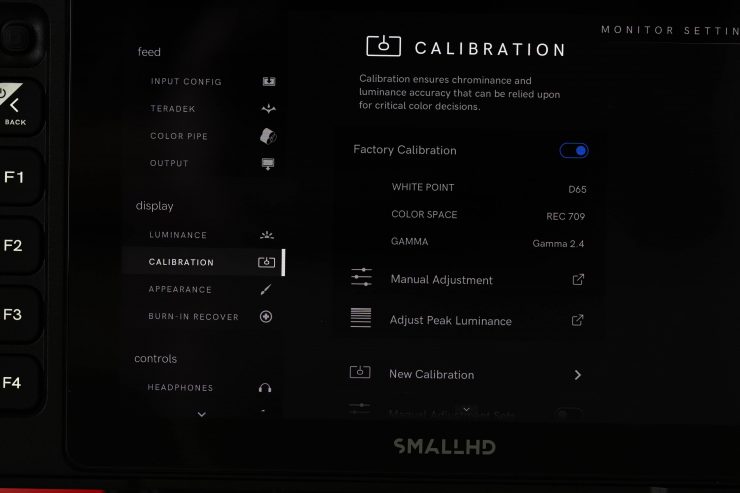
The ULTRA 7 Bolt 6 RX 750 is calibrated from the factory, but SmallHD does give you the ability to do your own calibration or make manual adjustments.
The picture quality is very good on the ULTRA 7 Bolt 6 RX 750. I haven’t used every SmallHD monitor they have made, but personally, I found the image quality on the ULTRA 7 Bolt 6 RX 750 to be the best I have seen from a 7″ monitor.
Quite often, I have found that most high-brightness monitors are a compromise between brightness and image quality. I found this to be the case with the 3,000 nit 703 Bolt. The ULTRA 7 Bolt 6 RX 750 doesn’t compromise on either facet.
The colors are nice and vivid, and most importantly, the blacks look nice and black. Even at 2,300 nits, the ULTRA 7 Bolt 6 RX 750 retains good contrast and color rendition. Most importantly, the colors I was seeing on the monitor looked almost identical to those of my camera’s EVF and LCD. A lot of monitors tend to be overly saturated, and at first glance, they look great, but a good-looking image doesn’t mean that it is accurate.
The trouble with trying to evaluate any monitor’s image quality is that it is very subjective. What one person may think looks good, another may think looks terrible. For me personally, I want the monitor to match as closely to what I am seeing in my camera’s EVF.
Does accuracy really matter?
This may sound like a ridiculous question to ask, but with everyone watching content on different screens and types of screens, it’s a legitimate question.
Just because you are basing color accuracy, brightness, and contrast off whatever monitoring or grading monitor you are using, there is very little chance that it is going to be seen by someone as intended unless it happens to be shown in a movie theatre (and even then, there are still variables).
In the case of giving a monitor to a director, producer, or client, does it really need to be super accurate? That answer is really going to depend on the level of production. For me personally, I would rather try and provide the best image possible so that a director, producer, or client knows exactly what they are getting. I found that the image from the ULTRA 7 Bolt 6 RX 750 enabled me to show producers, directors, or clients an accurate indication of what they were getting.
What you are viewing needs to be as accurate as possible, after all, that is how you are judging exposure, composition, focus, colors, etc. You wouldn’t buy a nice car and then put cheap tires on it, so why buy a sub-par monitor and expect to get good results?
Real-world use outdoors
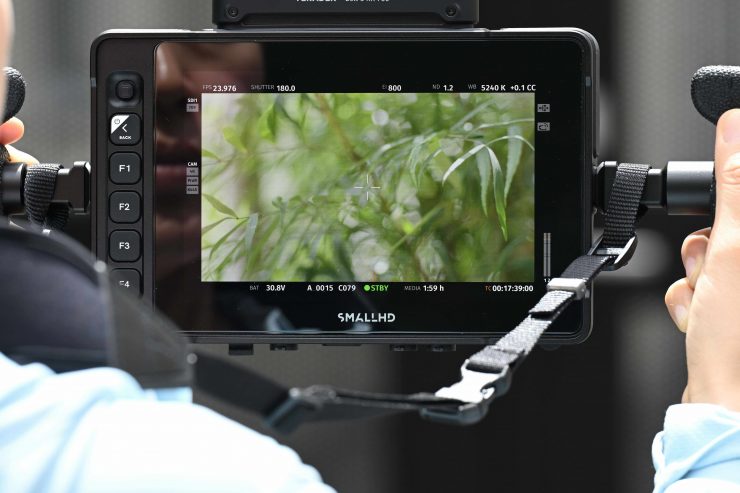
Most monitors will look good indoors, but outdoor usability is what separates a great monitor from a good monitor. Too often, I have tested so-called “Daylight viewable” monitors only to find out they can’t be used outdoors.

So, how does the ULTRA 7 Bolt 6 RX 750 perform outdoors in sunny conditions? As I previously mentioned, I had no problem using the ULTRA 7 Bolt 6 RX 750 outdoors, even in direct sunlight.
Is it actually 2,300 nits?
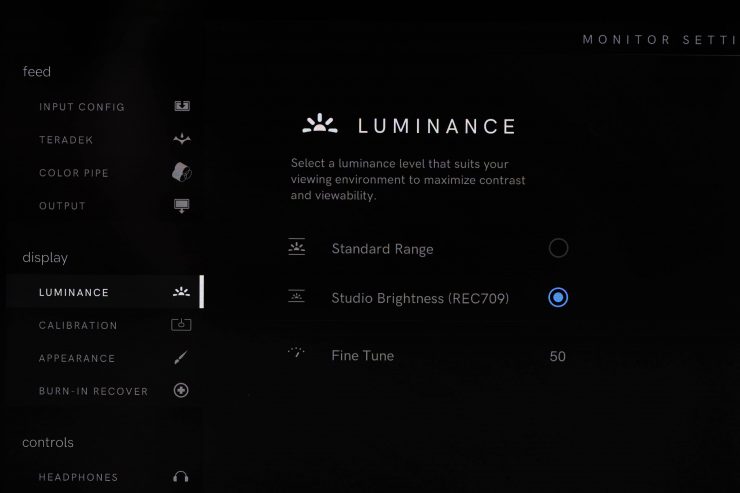
In the Luminance settings in the menu, you can choose from Standard Range or Studio Brightness (REC709).
In Studio Brightness (REC709), you are limited to 100 nits; however, you can use the Fine Tune setting to alter that.
To check the claimed brightness of the ULTRA 7 Bolt 6 RX 750, I shot a white card with a light set at 5600K, and then exposed the image so it was just below 100%, so there was no clipping. I then took a reading from the ULTRA 7 Bolt 6 RX 750 using a Sekonic C-800. The ULTRA 7 Bolt 6 RX 750 has a claimed maximum brightness of 2,300 nits, so does it produce 2,300 nits?
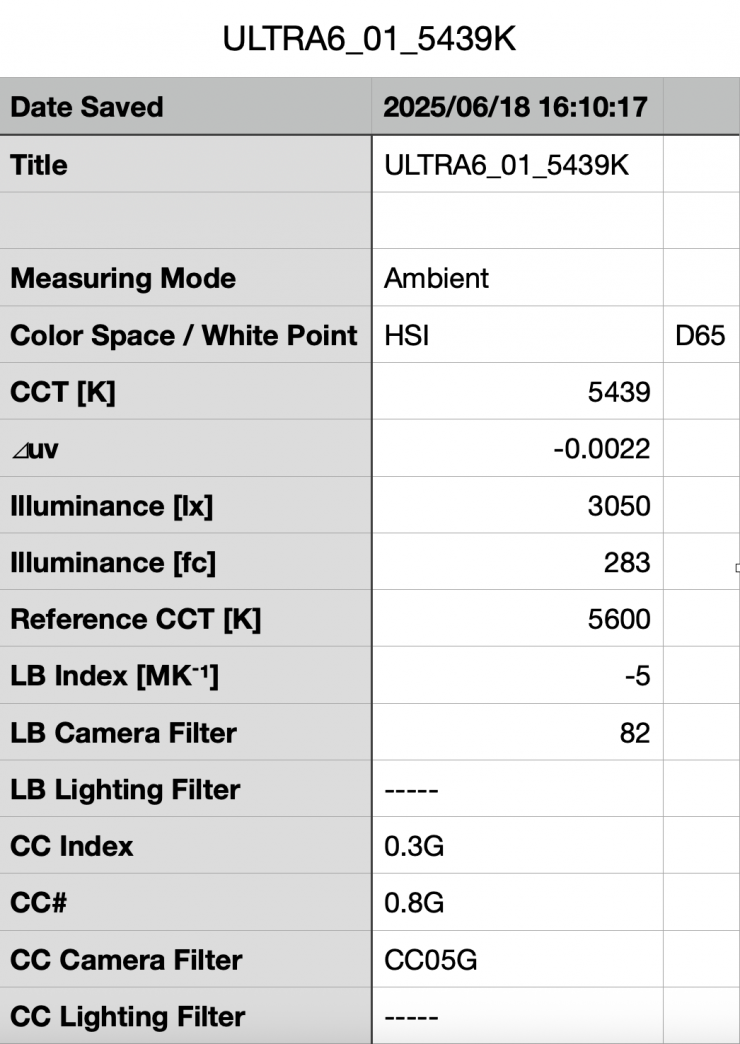
The ULTRA 7 Bolt 6 RX 750 gave me a reading of 3,050 lux and a Kelvin color temperature reading of 5439K. Just for reference, it had a CC score of 0.3G. The reading of 3,050 lux exceeded SmallHD’s figure of 2,300 lux.
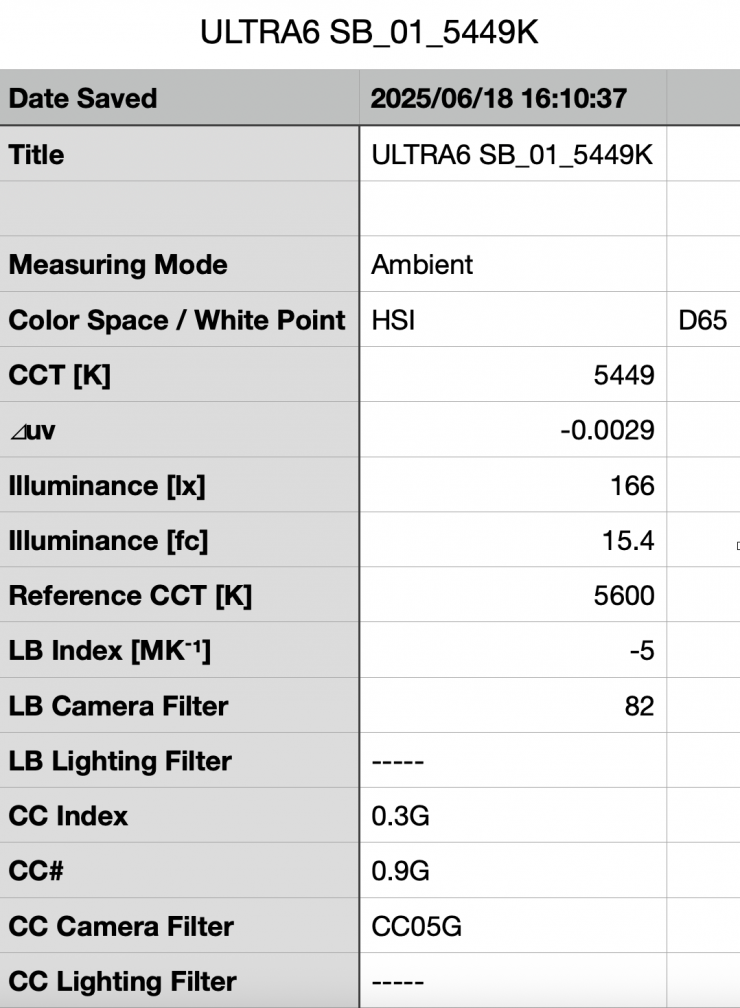
I also tested the monitor in its Studio Brightness setting, and it gave me a reading of 166 lux, which exceeds SmallHD’s figure of 100 lux.
How does the picture quality compare to the ARRI CCM-1?
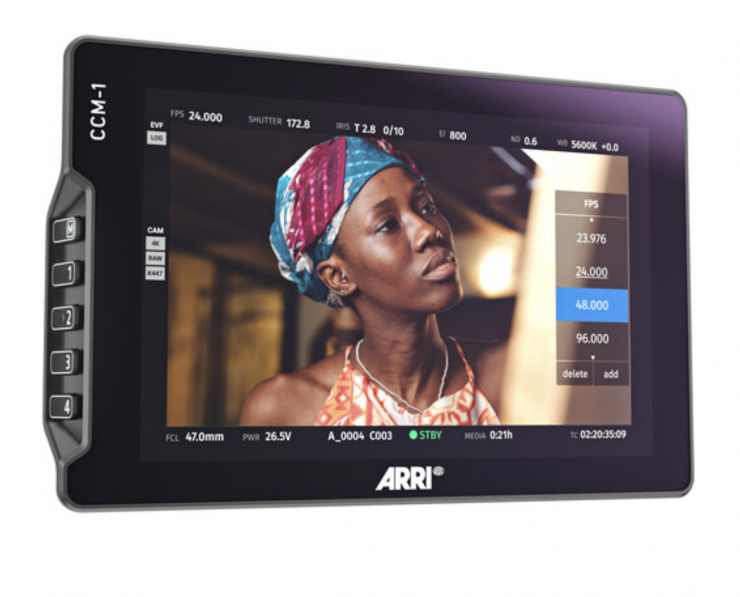
The ARRI CCM-1 is made in conjunction with SmallHD, but it costs $5,540.00 USD. The ULTRA 7 retails for $2,999 USD. The ARRI CCM-1 has camera control, and it can be powered directly from an ALEXA 35 or ALEXA Mini LF, but the 7″ panel should compare pretty favorably to the ULTRA 7.
| SMALLHD ULTRA 7 | ARRI CCM-1 | |
| PANEL TYPE | IPS LCD | TFT LCD |
| BACKLIGHT TYPE | LED Edgelit | LED Edgelit |
| BRIGHTNESS | 2,300 cd/m² | 1,500 cd/m2 |
| CONTRAST | 1000:1 | 1000:1 |
| PPI | 314 | 322 |
| COLOR GAMUT | 95% DCI-P3 98% Rec. 709 | 100% DCI-P3 100% Rec. 709 |
| COLORS | 10-bit Processing (8-bit panel) | 10-bit Processing (8-bit panel) |
| IP RATING | IP 54 | IP 54 |
| WEIGHT | 1.98 lb / 900.00 g | 20.95 oz / 594.00 g |

ARRI CCM-1 on the left & ULTRA 7 RX 750 on the right 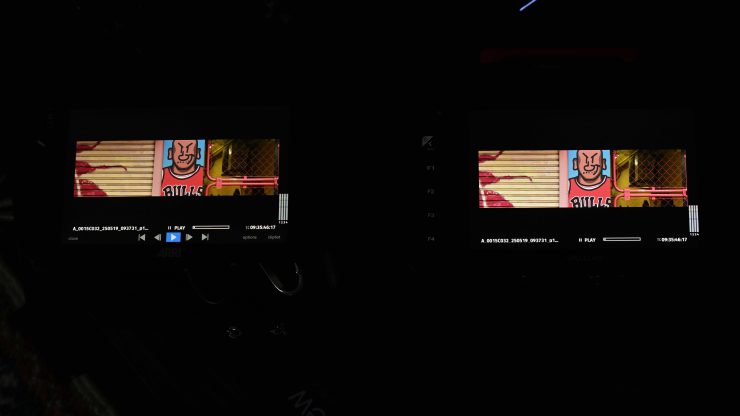
ARRI CCM-1 on the left & ULTRA 7 RX 750 on the right
I hooked up the CCM-1 to the ALEXA 35 and then also sent a signal to a Teradek Bolt 6 750 XT TX that was transmitting to the ULTRA 7 RX 750. To my eye, the images were pretty close. The ULTRA 7 RX 750 leans a tiny bit greener, but not by much, and I thought the CCM-1 showed slightly better color nuance. Considering I was viewing an image that was being transmitted, the ULTRA 7 RX 750, the image matched pretty closely to the CCM-1.
Price & Availability
The SmallHD ULTRA 7 RX 750 is available on B&H for $3,699 USD.
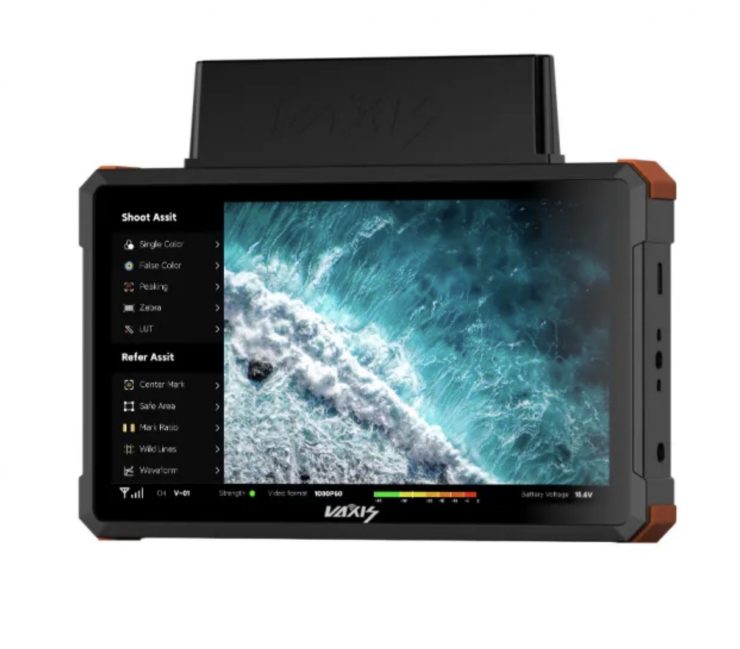
Vaxis Storm 072 Pro Wireless Monitor 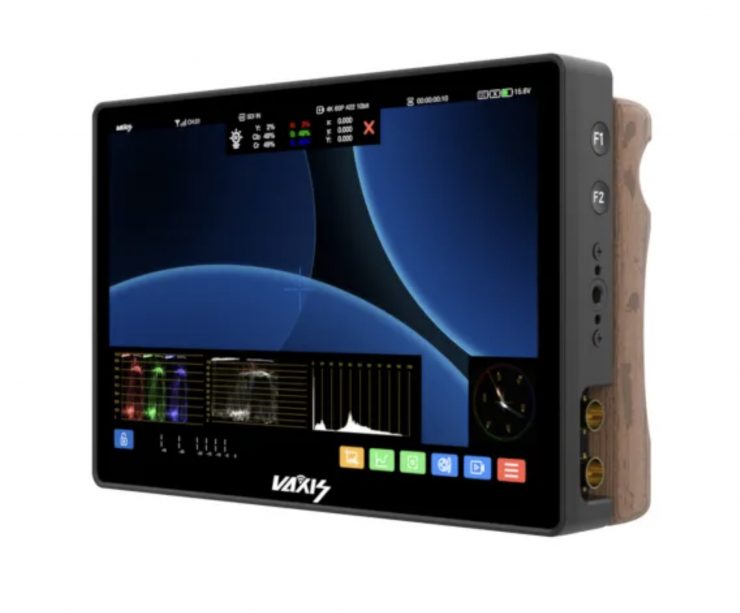
Vaxis Storm Cine 8 Wireless Monitor
The only real competition in this space comes in the form of the Vaxis Storm 072 Pro Wireless Monitor, which retails for $2,680 USD, and the Vaxis Storm Cine 8 Wireless Monitor, which retails for $3,999 USD.
Conclusion

The SmallHD ULTRA 7 RX 750 is an excellent product that combines a great monitor with a Teradek Bolt 6 RX 750 receiver. The PageOS 6 feature set and customization are something you just don’t find on other monitors.
It produces a very bright and pleasing image, and it matched what I was seeing in my EVF, which is what I really care about.
The build quality is very good, and having an all-in-one solution as a director’s monitor makes a ton of sense as you don’t have to create a frankenrig and power multiple items and have a spaghetti chain of cables.
The caveats with this system are that the optional handles aren’t very good, and the monitor itself gets very hot. I would have also liked to have seen SmallHD implement some sort of basic recording to the SD card so you could review takes.
I much prefer to use wireless systems with dedicated frequencies and as close to zero latency as possible, so that you get a good, clean image that hasn’t been compressed to within an inch of its life. I feel exactly the same way about wireless audio, and that is why I don’t personally use Wi-Fi-based systems unless I have no other choice.
Yes, the SmallHD ULTRA 7 RX 750 is expensive, but it has a lot of features and functionality you just don’t find with other monitors. Whether you need to see a zero (or as close to) latency-free image without a ton of compression really depends on what you are doing and what your requirements are.
Using a much more affordable compressed wireless monitor may be perfectly fine for what you need. As I said earlier, the SmallHD ULTRA 7 RX 750 is not a product that is going to appeal to everyone, as it is being targeted at a specific segment of the market. If you own or use a Teradek Bolt 6 wireless system, then the SmallHD ULTRA 7 RX 750 is a great addition.
